We’d been in Buenos Aries (look for the Buenos Aries blog) for a few days and were now doing a side trip to Iguazu Falls.
Flying to Iguazu
This morning was an early one. We had to dash over to our next hotel, the Sofitel, to drop off our luggage, and then head to the domestic airport in Buenos Aries (Aeroparque Jorge Newbery) to catch a flight to Iguazu Falls. Our driver picked us up, and because it was still so early, 630 in the morning, there was no traffic. Argentinians stay up late and sleep late. It took us less than 10 minutes to make our way across town, drop of the luggage and head to the airport. We got to the airport about 2.5 hours before the flight. The airport was packed and the line to check in was long. But I noticed some check-in kiosks, and since we had no luggage to check, I decided to give that a try. The only problem for me was that Spanish was the only option. So I just tried to follow the instructions. Basically, the layout is the same at all airports kiosks throughout the world, so between my experience as a traveler and my very, very basic Spanish, I figured it out and within minutes had our boarding passes.
Security had a long line, but it moved very quickly, in part because we did not have to remove our shoes nor take anything out of our bags. Computers could stay in. No plastic bag for liquids needed. Shoes and jackets remain on. Oh, I miss those days (although that is what TSA pre-check in the US is all about).
We were flying the Argentinian airlines, Aerolineas Argentinas. We made our way to the gate to check on our seats. We had been assigned seats automatically, but I wanted a window seat – after all, we were flying to one of the greatest falls in the world. How special to be able to see that from the plane. Not only was I able to get a window, but I even got it in the exit row. What luck! And then I remembered the wing would be in the way. Oh well. I’d still get a partial view.
Since we were flying from the center of town, we had a lovely view of Buenos Aires from the plane.
Flying over Iguazu
The flight was about 2 hours long. The land below us was rich in green trees. Forests and forests of trees. Argentina produces about 10 million tons of wood each year, although due to lack of infrastructure, more wood is produced than can be managed and most of it is used as charcoal. And these were all the trees we were seeing.
And then, as we began our final approach, I could see a mist above the trees. Was it the falls? Yes. Devil’s Throat from the air. I could make out the rivers leading into the falls, the water falling hundreds of feet down, and the mist climbing into the air, hundreds of feet up. It was magnificent, even with the wing in the way. And it was just a preview of what the next two days would show us.
When the plane landed, everyone clapped. This happened on our return flight as well. Not sure if everyone was so happy to have survived, or if it just a way to thank the pilot and crew for a great, safe flight.
We landed in the small airport and made our way to baggage claim to find our driver. He was late which made us a bit nervous, but it almost seems to be the way here in Argentina. All our drivers were a bit late getting us at the airports. But the important thing is we finally saw the sign with our name and went to meet Rodolfo Vargas, our guide for the next two days.
Iguazu Falls and Parque National Iguazu
On the way to our hotel, Rodolfo started telling us about himself, about the park and about the falls. He studied three years to be a guide and has been guiding for 15 years. His wife is also a guide and often they are busy taking officials from different countries around as the two of them are considered two of the best. He was born and raised in the Iguazu area so really knows it backwards and forwards. And they have a young son. Maybe he too will be a guide one day.
The park has over one million visitors each year, mostly to see the falls. But the park is also a jungle environment and the falls are a large delta with many islands thus forming a great wetland area. Thus lots of birds and plants also predominate here.
Iguazu Falls are the largest waterfall system in the world, dividing the river into the upper and lower Iguazu. It has a 1.7 mile long edge which divides the falls into many separate waterfalls, varying between 197 to 269 feet high. The number of these smaller waterfalls fluctuates from 150 to 300, depending on the water level. The first European to record the existence of the falls was the Spanish conquistador, Alvar Nunez Cabeza de Vaca, in 1541. Imagine his reaction when he first saw these powerful, magnificent falls.
Most of the river flows through Brazil, but 80% of the falls are on the Argentina side. The river in fact forms the border between the two countries. These falls are taller than Niagara and are twice as wide with 275 cascades spread in a horseshoe shape over almost two miles of the Iguazu River. It is now a UNESCO World Heritage site, in part because of the falls and in part due to the beautiful landscape and subtropical forest with 450 species of birds, butterflies, orchids and jaguars.
The name Iguazu means “Big Water.” And of course there is a legend around it. There was a deity who planned on marrying a beautiful woman named Naipi. Naipi fled with her mortal lover Taroba in a canoe. Enraged, the deity sliced the river, creating the waterfalls and condemning the lovers to an eternal fall.
There is a second legend as well. There once lived a big snake, names Boi, in the river. To calm the snake’s ferocity, the aborigines sacrificed a woman every year as an offering. But once a brave aborigine kidnapped the woman and saved her from the traditional rite, and escaped with her through the river. Boi burst in anger, bent its body and split the river forming the cataract separating the men from the women.
Basically, the river runs along smoothly until it reaches a series of faults where the water tumbles down and drains into the Parana River. The largest and main fall is Devil’s Throat, and that is what we saw from the airplane. Devil’s Throat is a u-shaped fall that is 269 feet x 492 feet x 2297 feet. In other words, huge!
The Sheraton – whoops, nope. The Melia
But before we could experience all this first-hand, we had to check into our hotel. We passed the main entrance to the park with all the people waiting in line but since we were staying inside the park, we could keep going.
We had booked a room with a view of the falls at the Sheraton, the only hotel inside the park on the Argentina side. We went to check in and give them our Sheraton card number, but were told the hotel was no longer a Sheraton. Ten days ago it became the Melia. But we still had our room with a view. And that view was spectacular.
The hotel is shaped almost like a boat with rooms and balconies facing either the jungle or, for a few more dollars, the falls. We could also see the hotel on the Brazil side. There is a large swimming pool (which we did not get to use), a large grassy area covered with fig trees and birds. We saw a taro bird family walking around, a papa bird, a mama a bird and a baby bird. Taros are furiously protective of their young. And we saw toucans.
The lobby bar had a harpist playing quiet music. There was a business center and couches to just hang out. The room was standard with a king size bed, a small couch, a desk and nice size bathroom. But the best part of course was the balcony facing the falls.
The Boat Ride
Rodolfo waited for us and we quickly came back down to start our walk. The park has a lower circuit and an upper circuit. The Upper circuit (Circuito Superior) is made up of trails and bridges that run along the top of the falls, allowing you to look down over many of the largest ones like San Martin falls. The upper circuit is about ½ a mile long and has six lookout viewpoints. The most impressive part is the catwalk leading to Devil’s Throat. But more on this later. The lower circuit (Circuit Inferior) leads to the base of the falls. This circuit is about one mile long and takes you through forests to 8 lookout points.
Our destination this afternoon was the bottom of the lower circuit to catch a boat ride which would take us under the falls. Rodolfo was not coming with us so he showed us the path on the map. Looked simple enough. Go up this road, past the fast food joints, around the cabin with the men with orange t-shirts selling boat tickets, and down to the wharf. Easy as pie. Except it wasn’t. As we walked out of the back of the hotel towards the paths, we realized there were two paths. One was gravel and unmarked. The other was paved, so we assumed that was the correct one. We passed our first falls, the Two Sisters, which looked big and beautiful, but we would come to understand that they were actually small in comparison to the others. We kept walking until we got to the food joints and stopped for empanadas. The forest around us was full of coatimundis (mammals of the raccoon family).
After lunch we headed in the direction we thought the path should go, but there was no path. So I asked and we were directed towards the tower at which point there would be signs. The tower was once open as to climb for a view, but it is now old and unsafe. But it makes a great landmark. So we headed towards the tower. At that point there were two options, both labeled with arrows for the lower circuit. One looked like steps and the other was “handicapped” or a path with no stairs. We chose that one. And it took us right back to where we started at the hotel. Whoops. Turns out the gravel unmarked path was the way to go. We headed that way, passed another fast rood area, asked again, and were directed the correct way to the lower circuit and the boats.
We got to the cabin with the guys with the orange t-shirts and kept going, this time to a dead-end at the San Martin Falls. The spray was strong and refreshing. The falls beautiful, powerful, breathtaking. But it was a dead-end.
So we backtracked and asked the guys with the orange t-shirts where we needed to go. We had a reservation for the 3:20 boat and it was almost 3:20. The orange t-shirts told us to hurry, but safely, down all the stairs (wet stairs I should add) to get to the dock as they were waiting for us. So we hoofed it as fast, but safe as possible. Now, our plan had been to take off our clothes before we got onto the boat and just be in our bathing suits which we wore under our clothes. But we were so late, that all we could do was grab a life-jacket and a waterproof bag (they supply a big green waterproof bag for all your belongings). We got on the boat and were amazed to find two seats still available right at the “window”, that is, at the edge of the boat. I managed to take off my shoes, pants and shirt and just be in my bathing suit. But Andy was not that quick and just remained in his clothes. You can tell where this is going…
Our boat was a semi-rigid raft with powerful engines that would take us upstream into the mist formed by the falls. And right under the falls as well. The boat took off bumping along the water, heading toward the falls. They slowed and stopped so we could take some pictures and then it was time to put the cameras away in our waterproof bags. And then we went in. Literally, went in right under the falls. First it was just heavy mist. Then it was like a powerful rain or shower that was almost painful. I took off my glasses as I was afraid they would break from the force. Water was falling everywhere. We backed off, and then went back in again. Three times. By the end of it, we were wet and cold, but laughing all the way. Andy was a laughing a bit less as he was in very wet clothes and shoes.
- Green bag to protect your belongings
We got back to the dock about 10 minutes later (seemed so much longer), changed into dry clothes (which I had brought with us, along with towels from the hotel), right by the side of the path (we put the clothes on over our wet suits). And we trudged back up the stairs, back along the lower circuit, back to the hotel. Even though we were wet and cold, the view of all the falls on the way back reenergized us.
Nevertheless, how wonderful to be staying right in the park and seeing our hotel at the end of the path!
The View from our Balcony
We took hot showers, changed into our cozy robes, brought up some lovely Argentinian wine from the lobby bar, and sat on our balcony, relaxing and watching the mist and the falls of Devil’s Throat. Birds were flying everywhere.
I could hear the sounds of the falls from the balcony and took a video, posting it on Facebook for my friends. When I went back into the room, I realized the sound I heard was not the falls. It was Andy using the hairdryer to dry his shoes! Ah well… the real sound of the falls would come tomorrow.
Dinner
We decided to have dinner at the hotel since it was convenient, and we were tired. The town of Iquazu is about 20 minutes away, would involve calling a taxi and would take so much longer. And it was a good choice. We had a table at the window, facing the falls. There was a tasting menu for only $499 pesos (about $27) and included wine, eggplant caviar, beef tenderloin or salmon and apple pie. There was music playing in the background, but it was American country western. I would have preferred Argentinian music. At one point I looked at my watch and saw that it was an hour later than I expected. Turns out that the hotel pulls time from Brazil side which is indeed one hour later.
The Upper Circuit
The next morning we woke up, looked out our balcony and saw the sun rising over the falls. What a way to start the day.
Breakfast was included with our room, so we packed, got dressed and went downstairs. It was a lovely buffet with fresh fruit, the famous Argentinian croissants, freshly made eggs, meats, cheeses, breads. Anything you could want. I saw a couple also ordering eggs, and the man looked and sounded just like a friend of mine. I asked if by chance they were related, and he said no. They were from New Zealand (although he was Australian). We chatted for a bit and then each went our own way. As a follow-up, they were also staying at the Sofitel in Buenos Aires and we ran into them there a few days later. We traveled in Buenos Aires together and have become friends with David and Judi.
Rodolfo met us at 8:00, just as the park was opening, and we headed off, this time on the correct path, to begin our tour of the upper trail. We passed the main symbol of the park and some murals representing the history. We were heading to the Rainforest Ecological Train station that would take us to the catwalks leading to Devil’s Throat. At the train station were recycle cans labeled with pictures which made it very clear what they were for. I thought they were very clever.
The train started at the visitor’s center, but we were already in the park so we picked it up at the second stop. That meant when the train arrived, it was packed. The train is not fully enclosed and there are no windows or doors, just sets of benches facing each other. Rodolfo asked a group of Japanese women to make room for us (the benches hold 4 and they were 3 on each side). We squeezed in and immediately made friends. I asked where they were from and told them I had been to Japan many times. We of course had to communicate with our hands and with their broken English. They insisted on taking pictures with us and we obliged. They laughed and laughed, with us, not at us, as we had fun meeting them. And the train continued chugging along, paralleling the river.
A few minutes later we arrived at the start of the walk to the Devil’s Throat falls. The catwalks meander over the top of the river and go on quite a long way. We saw turtles and lots of birds. Lizards. Butterflies. We saw the remnants of old catwalks that had been destroyed by floods caused by heavy rains. There was one area with an old stone wall. This was once a coffee shop! Unfortunately, it was also destroyed by the floods.
Yes, floods, some say, of biblical proportions. There was a serious flood in 1992 that wiped out all the catwalks. The river reached 36.000 cubic meters per second compared to the normal rate of 1500 cubic meters per second. There was another flood, even worse, in 2014 when the massive rainfall resulted in 46,300 cubic meters per second. Again, the walkways were destroyed. Those walkways were made of wood. But after two major floods, The Iguazu National Park system designed new catwalks that work along a folding system, thus preserving them from flood damage. When the river is low, the railings are raised and the gangways allow people to get to the edge of Devil’s Throat. When the flow of the river increases, the failings fold down to all the water to pass through, thus deceasing the resistance and even allowing tree trunks to float by. When the river level gets extremely high and the flow velocity increases, the gangways detach themselves thus avoiding compromising the concrete structures which hold them up.
We walked and we walked and before too long, we began to hear the roar. The roar of the falls. The roar of the water. If you have never been here before, and perhaps even if you have, you have no idea what to expect when you first turn that corner and come face-to-face with the Devil’s Throat of Iguazu Falls. Devil’s Throat (Garganta del Diablo) is actually about 14 waterfalls in the shape of a horseshoe stretching 1939 yards. But it looks like one big curtain of water. It is massive. It is powerful. It is loud. It is wet. It is magnificent. It is magical. And you are up-close and personal. You see water falling, cascading really, as far as you can see. It has been described as a giant funnel that swallowed the planet. And as you look down, you see a permanent cloud of mist filled with birds. The most famous bird here is the Great Dusky Swift and there are hundreds of them flying through the mist of the falls because they nest behind walls of the falling water of the falls. They have become the symbol of Iguazu National Park and can even be seen on the park badge. We saw them flying everywhere there was a waterfall.
And along the walkway, along with signs in Braille, was this poem by Alfonso Ricciutto about Devil’s Throat:
Natural Wonder Devil’s Throat
Let your soul be sated
With the odd beauty of this landscape
That although the world scrolling through on your travels
You can never find anything like this.
Good and bad dynamic and changing
Find here since your name
Takes in your humble heart of man
Truthful and consistent message.
Meditate and feel the deep emotion
Watching the vibrant paroxysm
Eternal mist that is circled.
It may have lost something in the translation from Spanish to English, but you get the idea.
We stayed there for a while taking it all in, as best as one can. It was overwhelming and I wanted to just stand there, forever. Everywhere I looked the water was making a different shape, a different color, a different sound.
But eventually, it was time to move on through the system of trails, catwalks, bridges and observation decks along the upper ridge of the falls, as there were so many waterfalls to see. As I mentioned above, the upper circuit’s trails are on top of the edge of the waterfalls, so we got a vertical view from the top. As you watch the water coming from the river and getting ready to cascade down, it looks like it is folding over and over itself, creating foam and a loud hissing sound.
After Devil’s Throat, the next largest waterfall is San Martin. From here we could see the widest view of the whole Iguazu Falls including the Hotel das Cataratas on the Brazil side, the Melia (former Sheraton) on our side, the Old Water Tank Tower, the balconies of the Upper and Lower circuits, the San Martin Island and the gangway to Devil’s Throat. Quite a view!
We also had close up views of Salto (meaning Falls) Bosetti, Salto Adam and Eve, Salto San Martin, Salto Barnabe Mendez and Salto Mbigua. Each fall was different. Each was beautiful. I asked Rodolfo if he ever got tired of this beauty (hoping he would say never). And his response was, “Everyday is different.” Yes. I would add even every moment is different. Because the water is always moving. Always changing. But always magnificent.
A word about Salto Bernabe Mendez. This waterfall is dedicated to and named after a park ranger killed by poachers in 1968. He had dedicated his life to conserving and protecting Iguazu. When on April 14, 1968 he came upon a group of poachers, thought to be from Brazil, he confronted them and was rewarded by being shot and killed.
The upper circuit walks you through much of the forest as well. So in addition to waterfalls we saw nature at its best. As I’ve mentioned a few times, there were birds everywhere. There was a Kingfisher and a crested jay and so many more I couldn’t identify. There were butterflies everywhere, including the Candrena Eighty-Eight (also called the Eighty Diaethria Candrena). You can see from the picture why it is call eighty-eight. We saw the butterfly everywhere and it seemed to land and pose for us – on the bridges, on our hands, anywhere it could alight. And orchids! And other flowers and vegetation! The was a little red berry, which looked like a red huckleberry, growing on a tree which Rodolfo gave us to taste. And lizards (including one huge black and white one that was absolutely gorgeous like nothing I’ve ever seen, called the Black and White Tegu or the Argentine Giant Tegu). And fungi. So much to see. So much to take in. So much beauty.
After completing the upper circuit it was time for lunch. We made it back to the fast food area, the one we had come across by accident yesterday, and while Rodolfo had his own private time, Andy and I had lunch in one of the restaurants. The food was mediocre, but we weren’t at Iguazu for the food.
After lunch, Rodolfo took us onto the lower circuit. Now we were below the falls,  and got to see some new ones as well. We followed the footbridges and saw the Dos Hermanas, Chico and Ramirez waterfalls. But the most impressive part of the lower circuit is standing at the bottom of the Bosetti waterfall and feeling the spray hit our faces.
and got to see some new ones as well. We followed the footbridges and saw the Dos Hermanas, Chico and Ramirez waterfalls. But the most impressive part of the lower circuit is standing at the bottom of the Bosetti waterfall and feeling the spray hit our faces.
We continued walking, up and down stairs through the Lower Iguazu shore where we could see the Alvar Nunes, Elenita and Lanusse steep waterfalls. And then we finally saw a rainbow. I expected to look up at the falls and see one. But here we looked down at the water falling and saw one.
The one thing we did not get to see was monkeys. The woods around the falls are full of monkeys and jaguars and other animals. I did not expect to see a jaguar (although how cool would that be?!), but I did hope to see some monkeys. In the 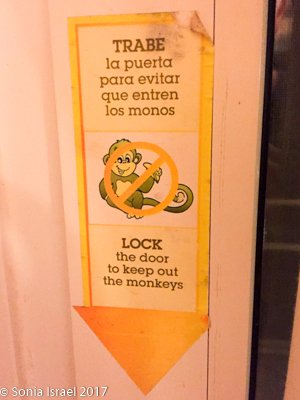 hotel we were warned to keep our terrace door locked as the monkeys knew how to slide them open and steal food from the minibar – food and damage we would be responsible for. But alas, no monkeys were to be seen.
hotel we were warned to keep our terrace door locked as the monkeys knew how to slide them open and steal food from the minibar – food and damage we would be responsible for. But alas, no monkeys were to be seen.
Back to Buenos Aires
Our time in Iguazu was over. It was a spectacular two days, but now it was time to fly back to Buenos Aires. As we flew out we again saw the falls from up above and as we flew into Buenos Aires, we got another wonderful view.
Last thoughts on Iguazu
If you are ever here during the full moon, Rodolfo told us about the night tour of the falls. It is supposed to be even more magnificent, or at least magn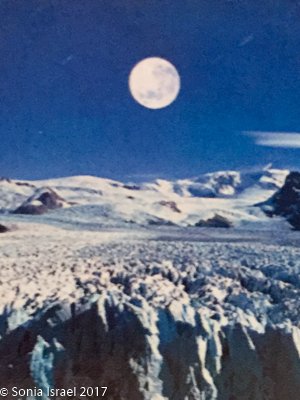 ificent in a different way than the daytime views. Here is a picture of a postcard from the full moon.
ificent in a different way than the daytime views. Here is a picture of a postcard from the full moon.
And if you want a great guide, contact Roldolfo Vargas at [email protected]. I suppose you could walk around yourself, but we always like hearing the back story to everything we are seeing.
We did not make it to the Brazilian side as we opted not to buy a Visa for just a few hours. A mistake? Perhaps. On the Brazilian side you get a more sedate, panoramic view of the falls. And you can take a helicopter ride. Our new friends David and Judi did just that and here are some of their pictures which they allowed me to share:
I am glad we stayed in the park. While hotels and restaurants in town might be nicer, the convenience of being right in the park, not having to stand on lines to get in, being able to be the first in and the last out should you want, and most of all, sitting on your balcony and watching the sun set and the sun rise over the falls. Nothing can beat that.
In my mind, Iguazu is one of the natural wonders of the world, second perhaps to nothing else. The majesty. The magic. The music of the water. You have to stand there and take it all in. And then, when you leave, you have to try to remember it, because it is hard to remember sometimes that nature can be that outstanding.
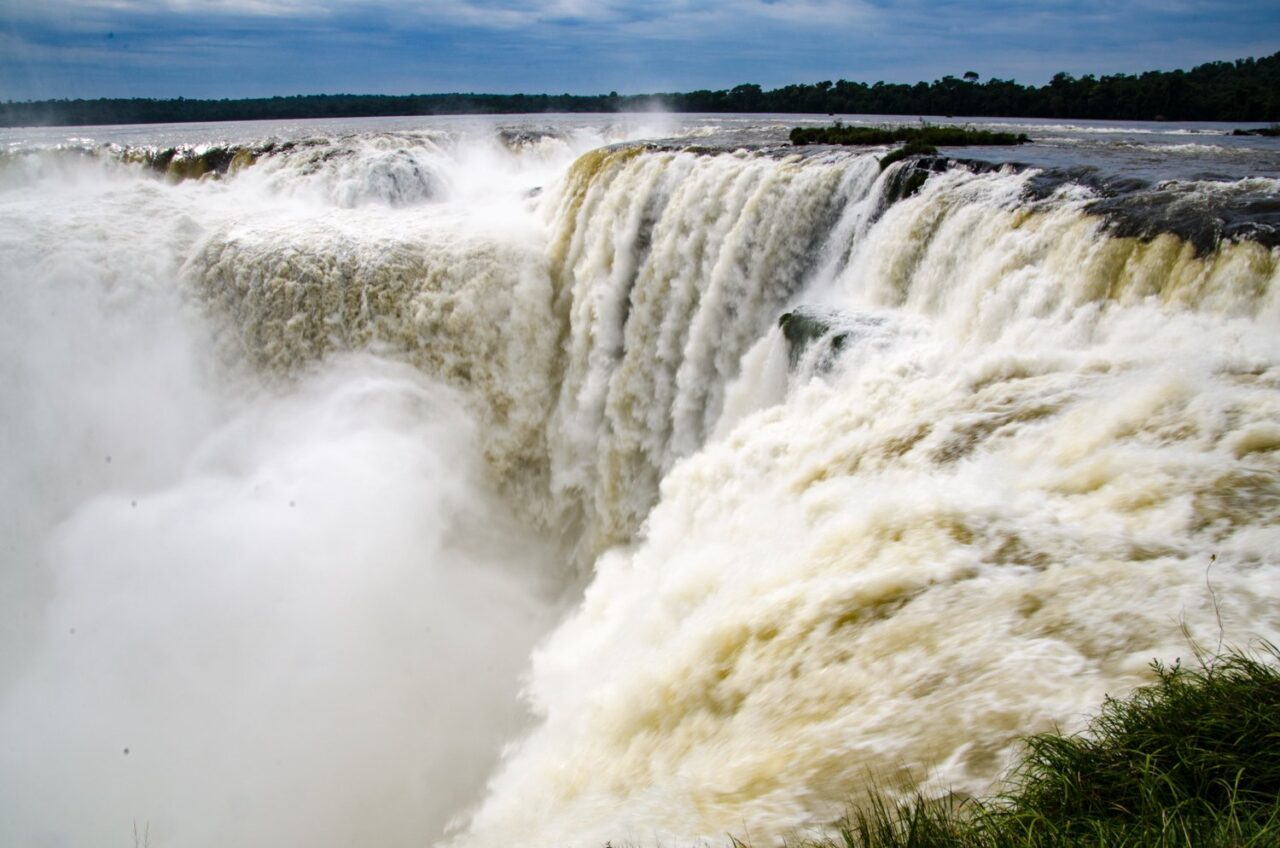
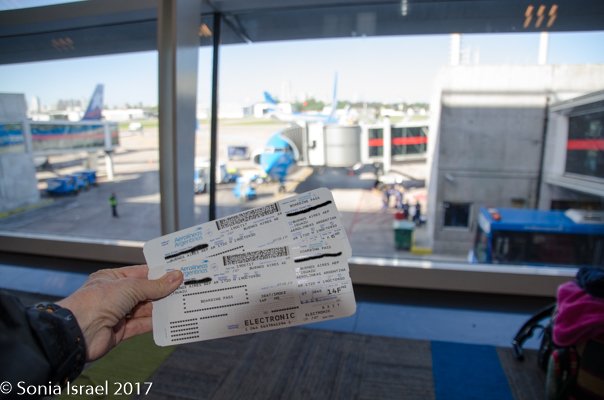

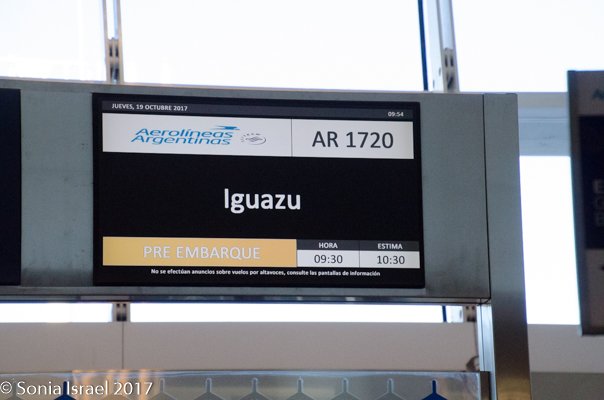
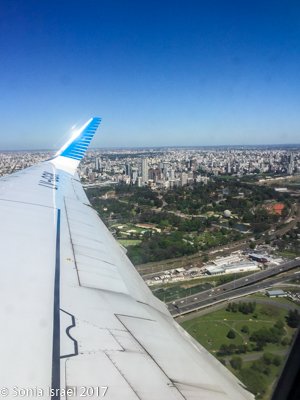
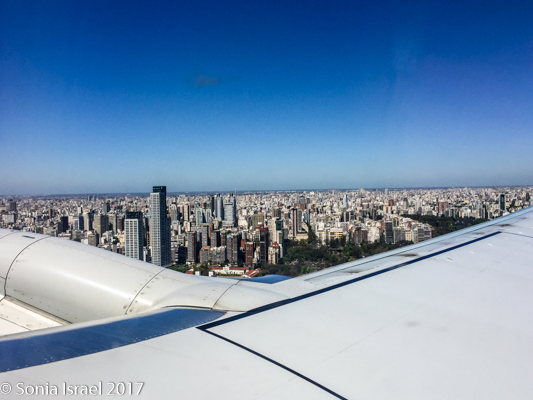
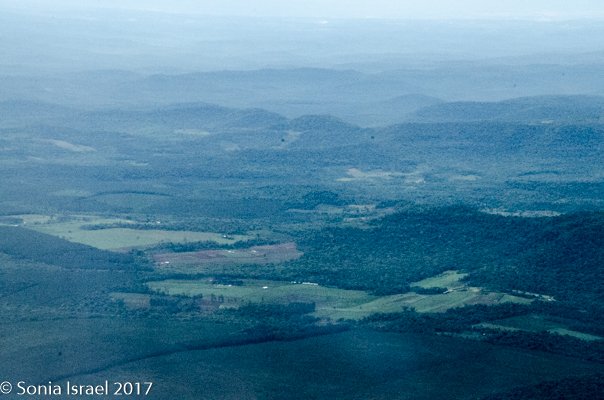
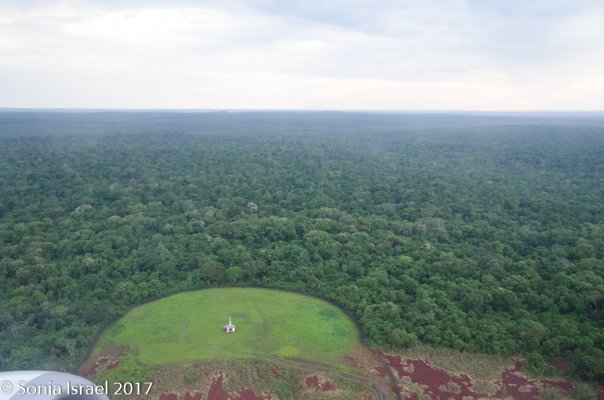
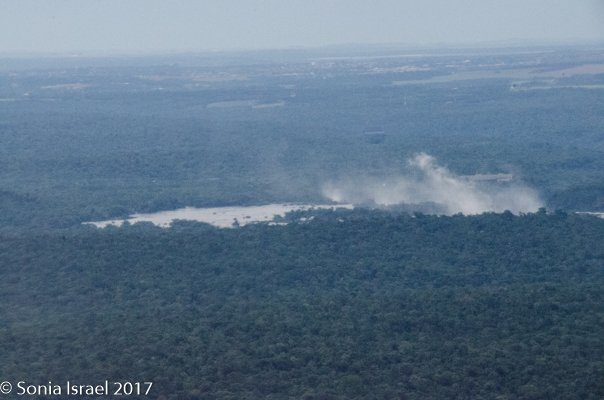
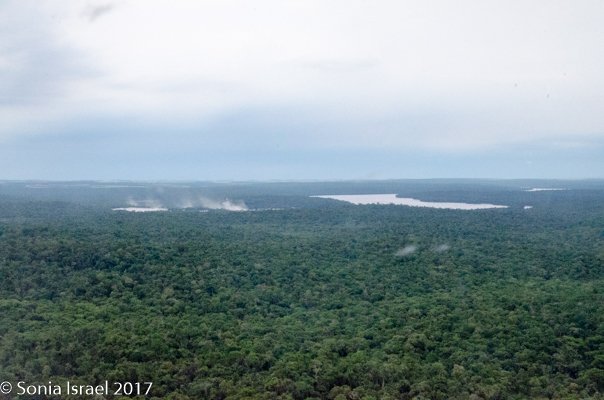
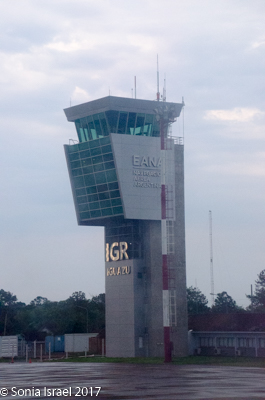
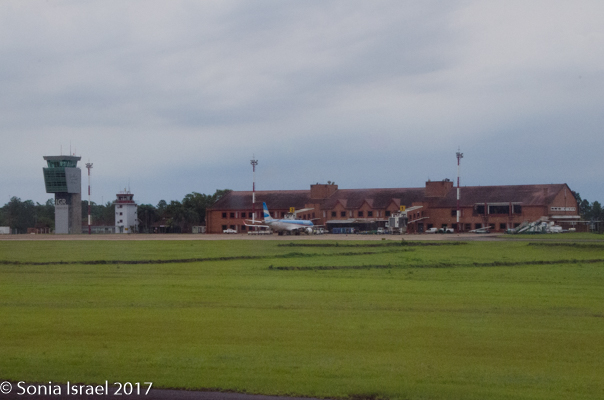
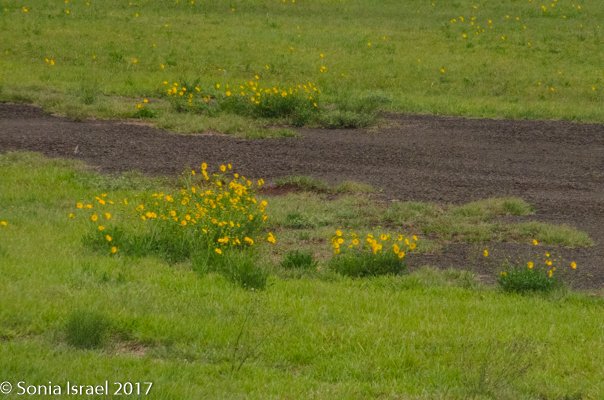
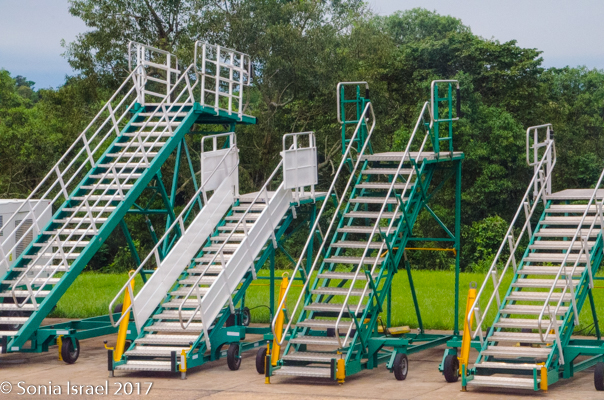
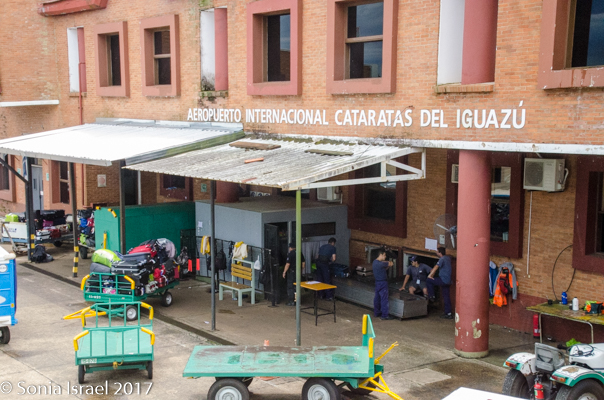
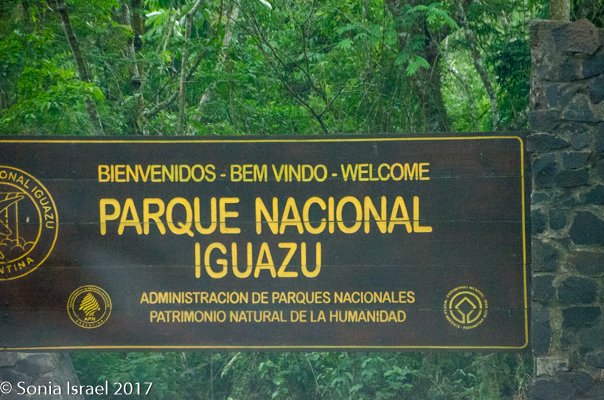
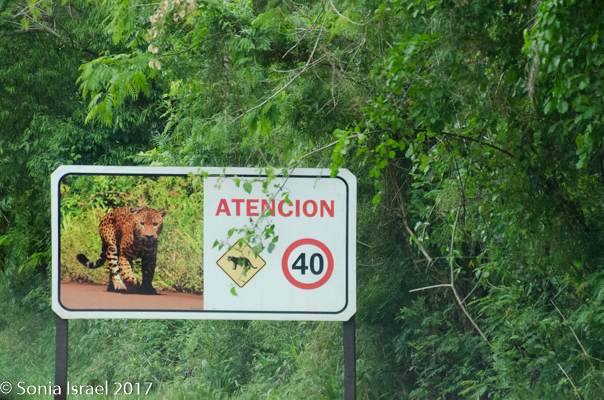
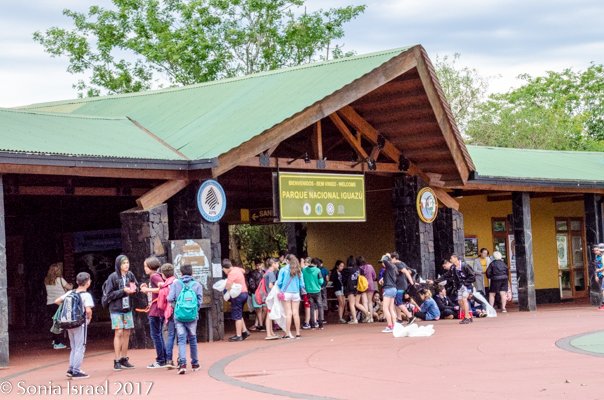
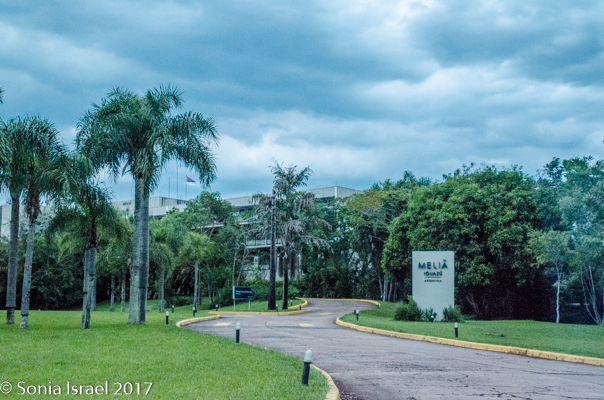
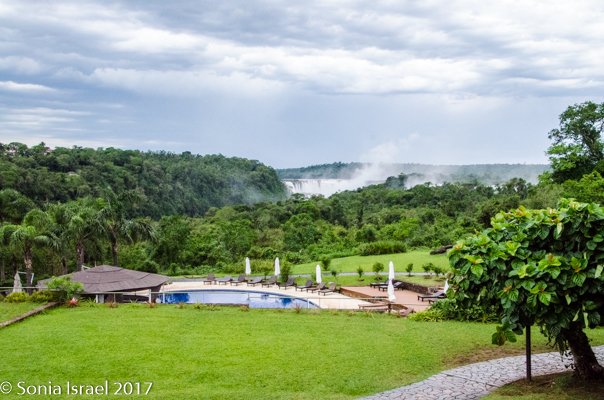
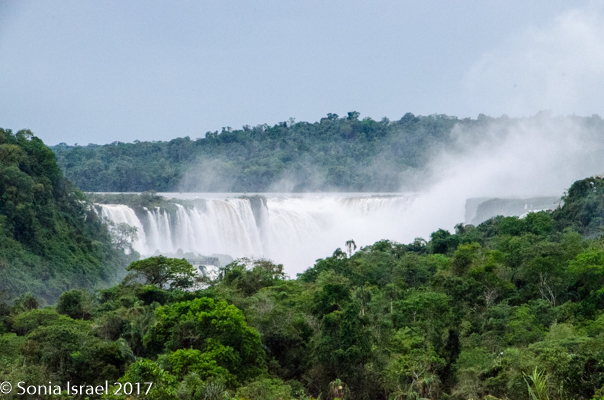
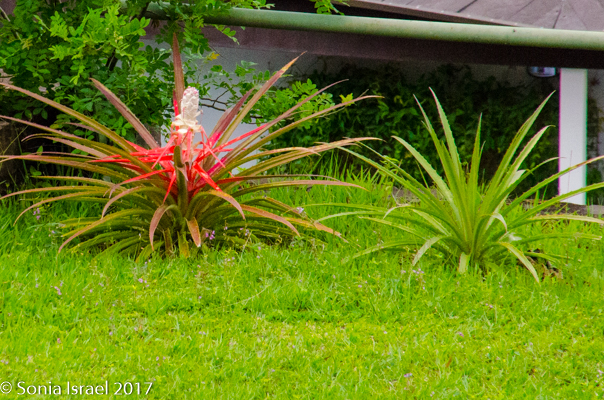
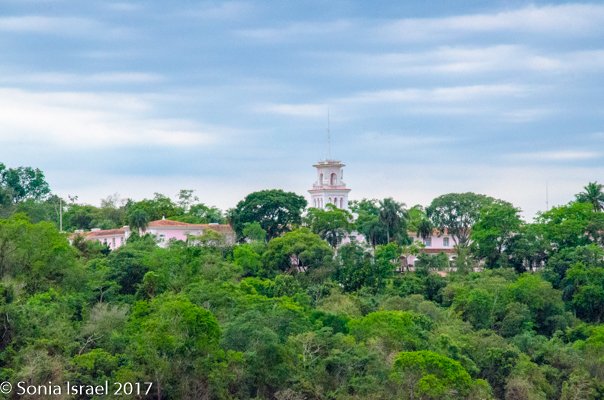
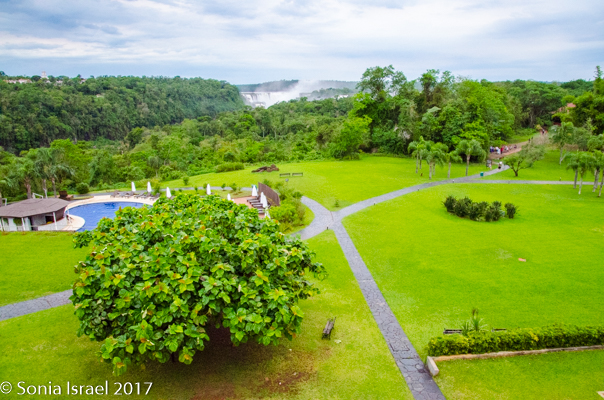
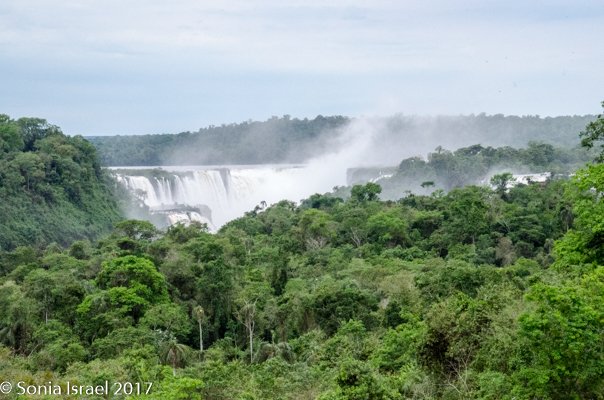
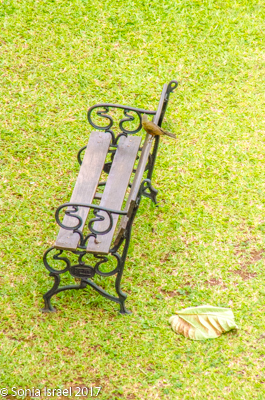
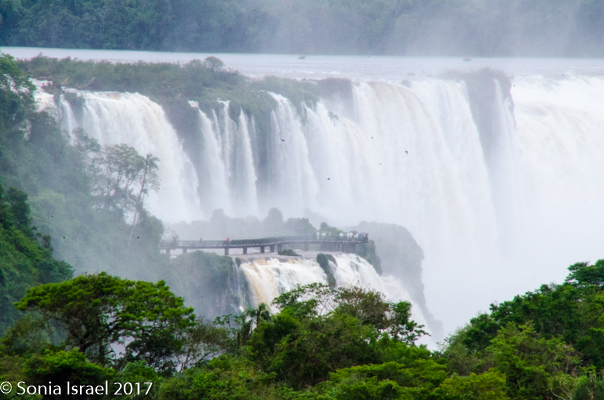
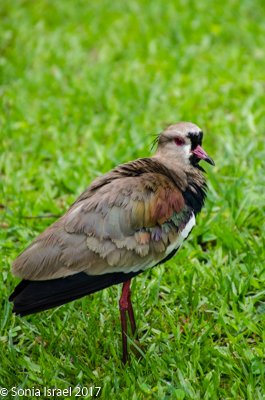
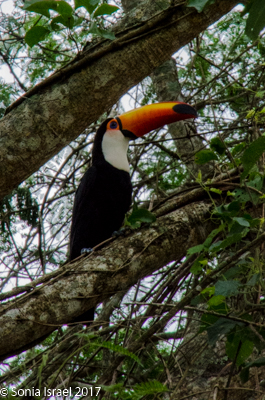


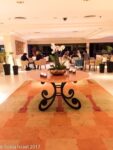

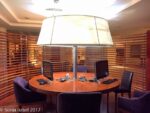

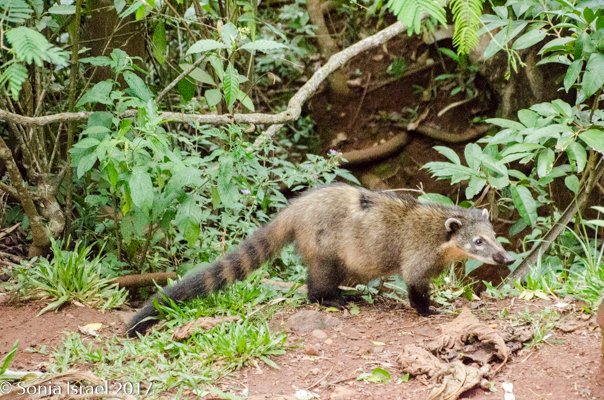

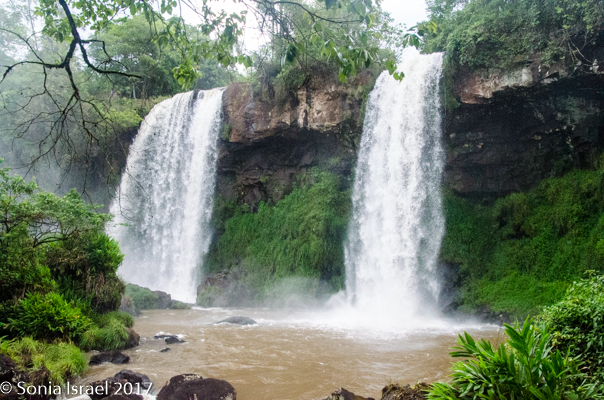

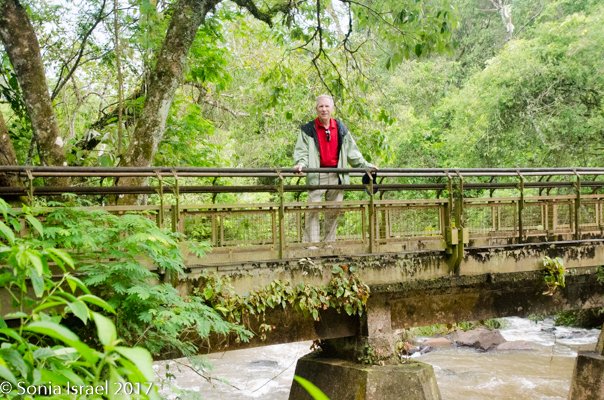

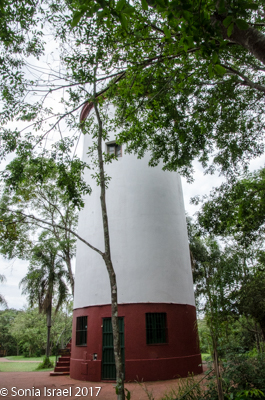
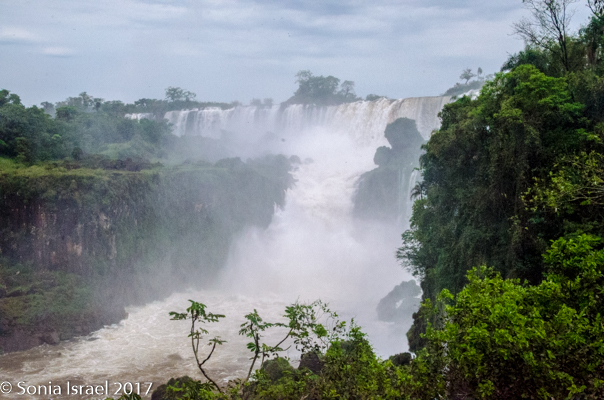
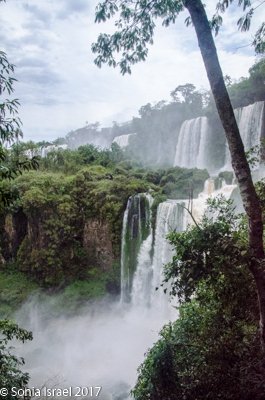
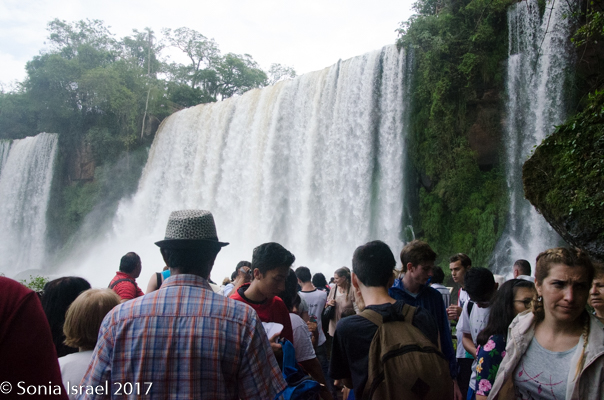
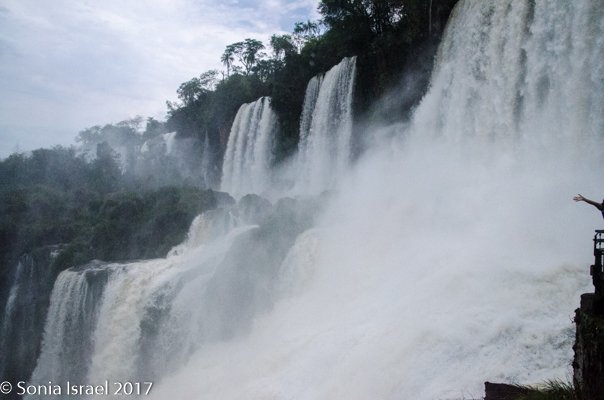
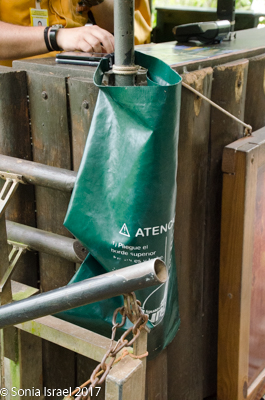
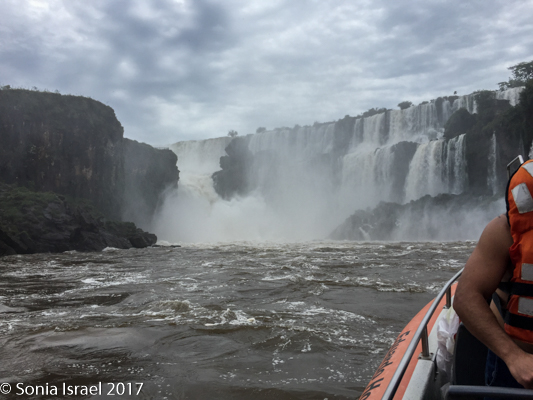
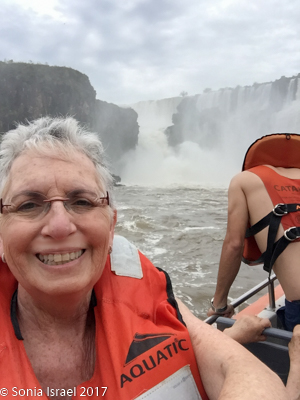
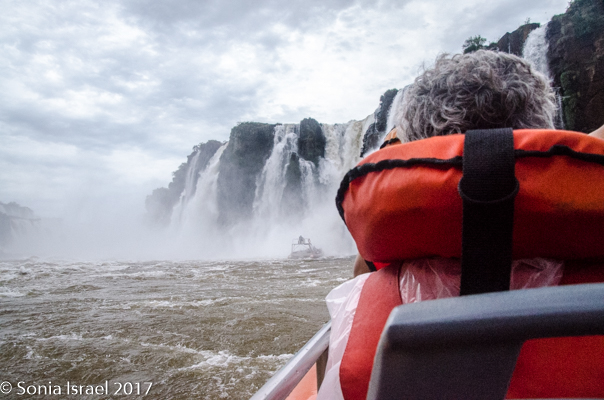
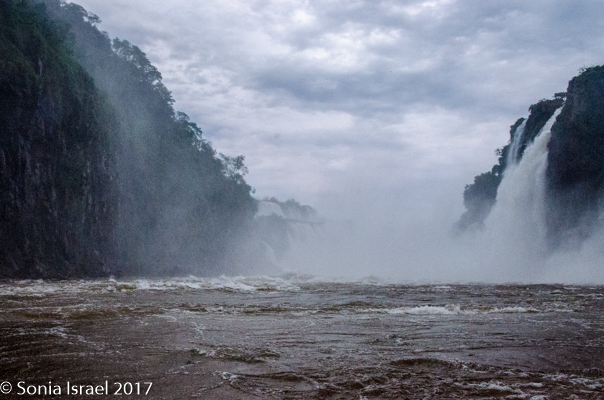
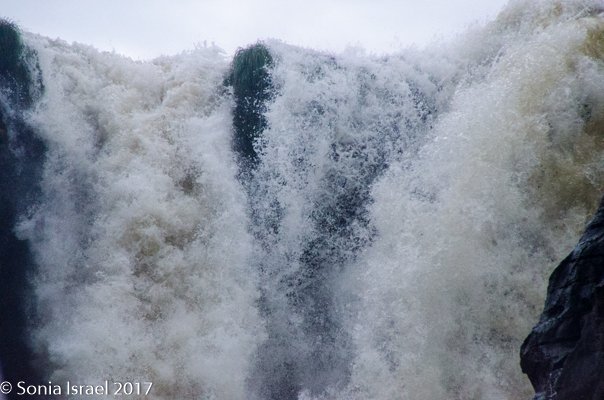
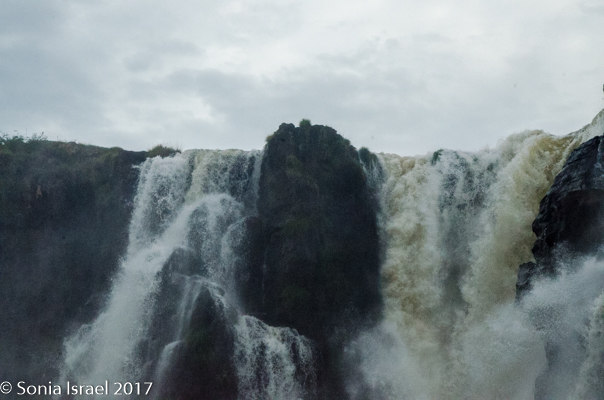
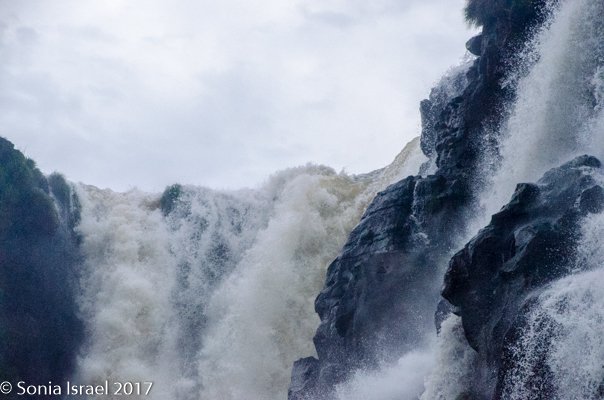
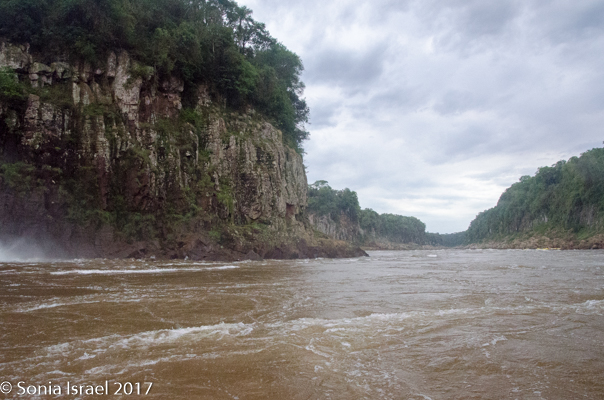

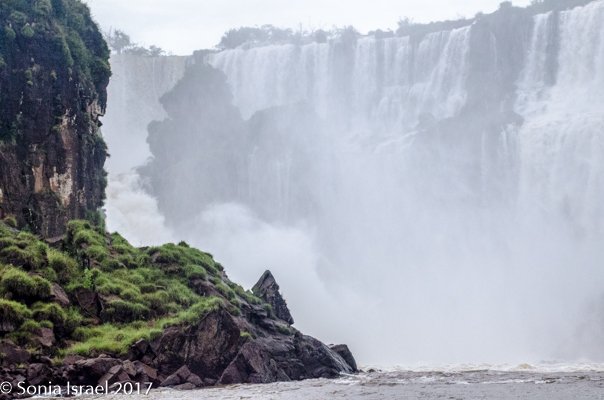
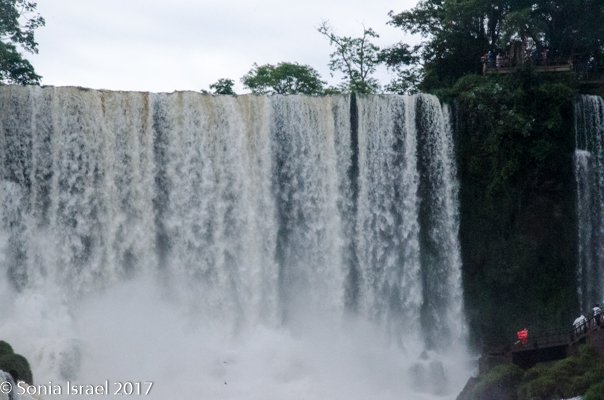
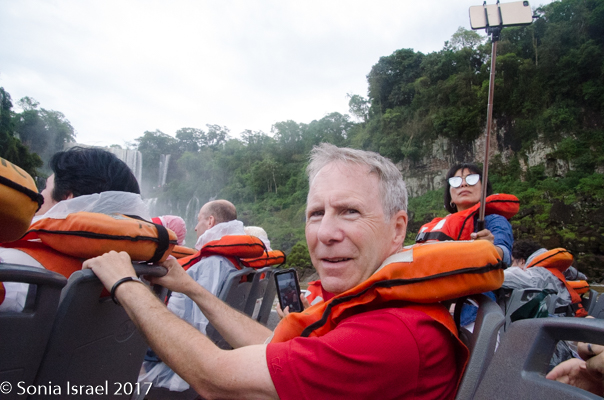
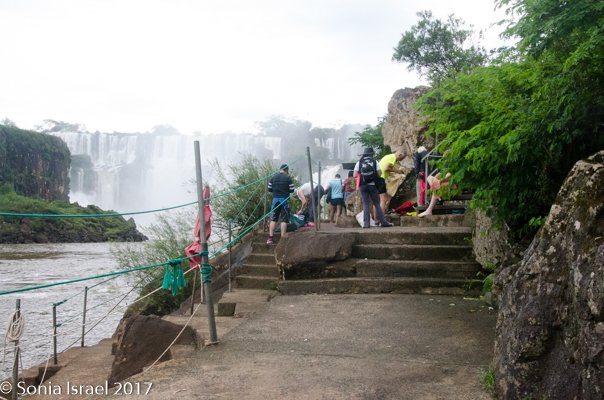
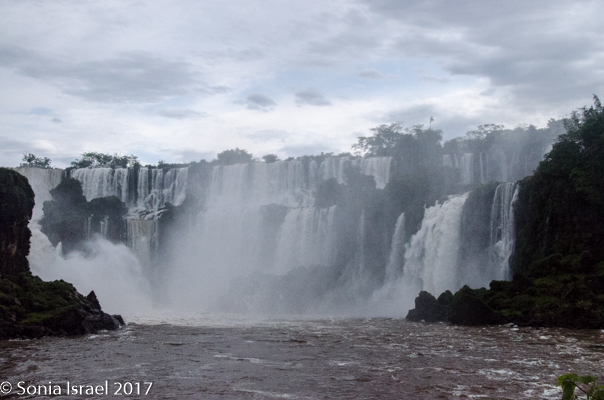
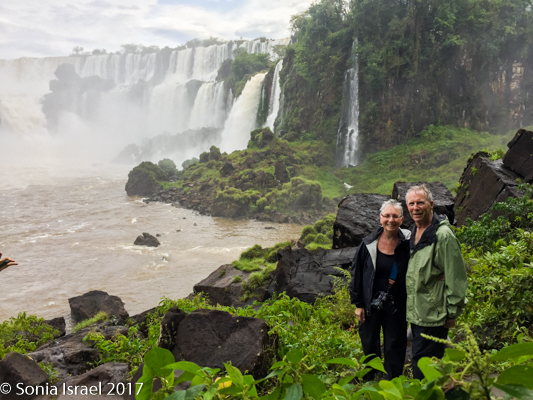
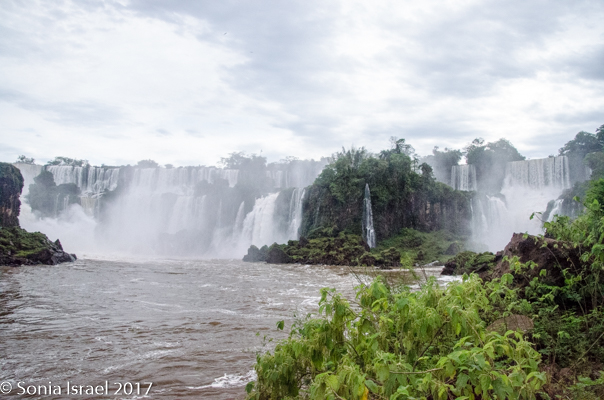
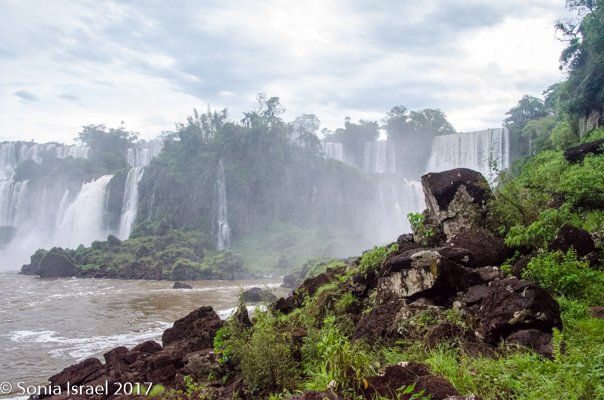

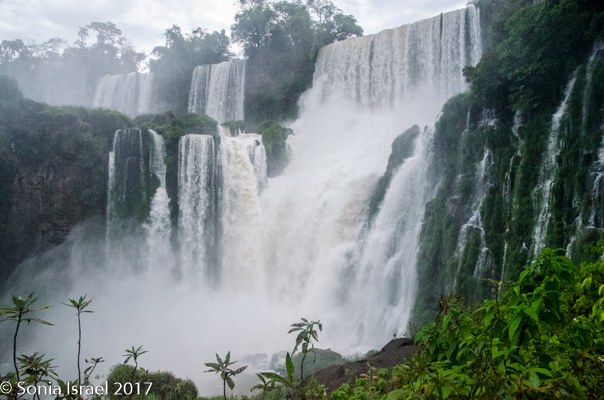

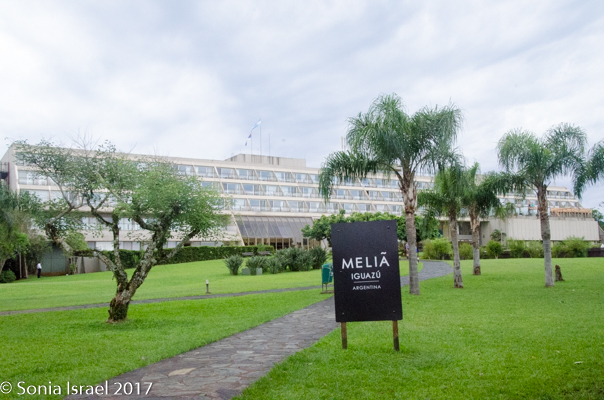
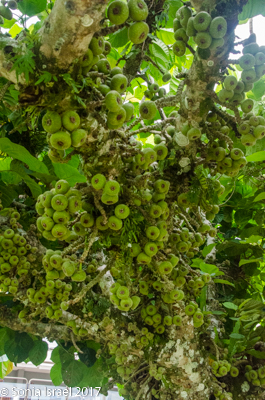
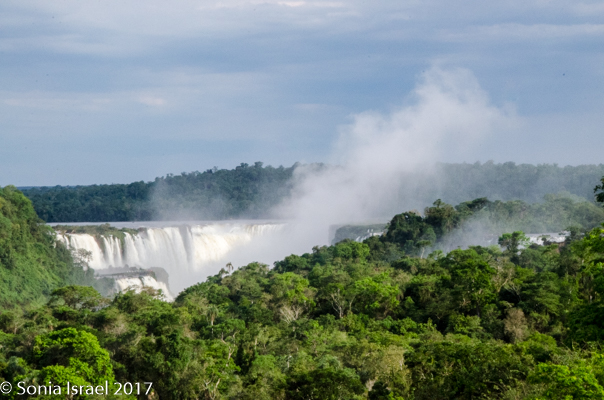
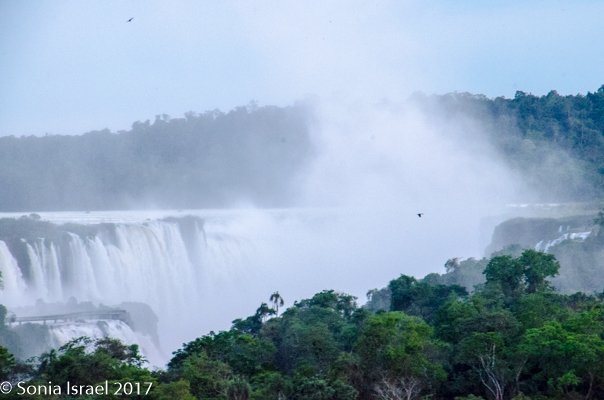
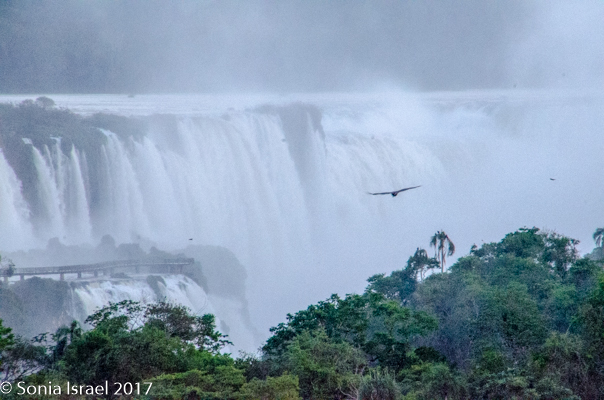

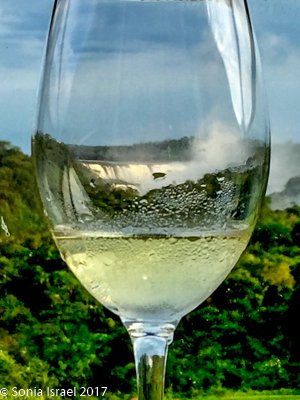
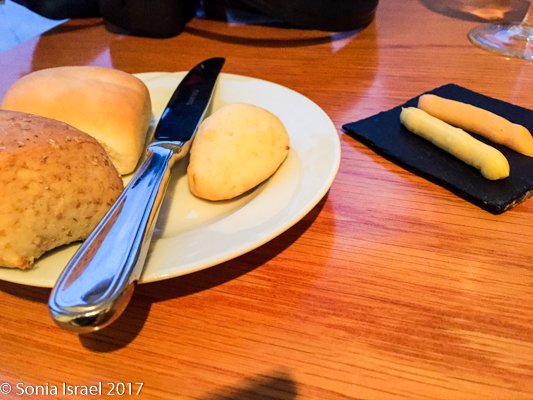
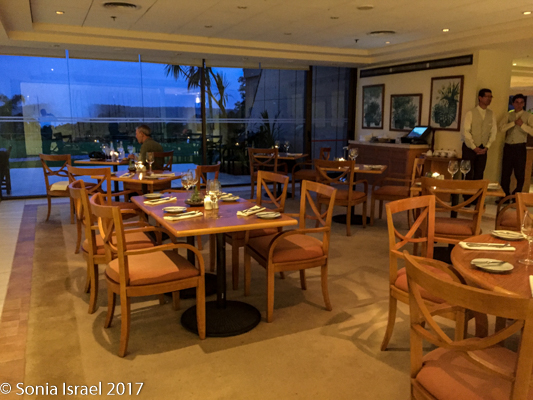

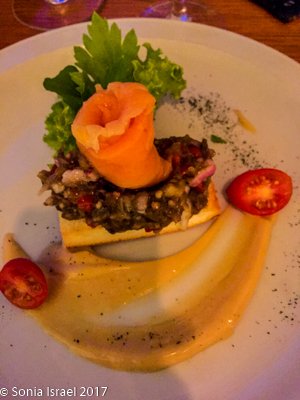

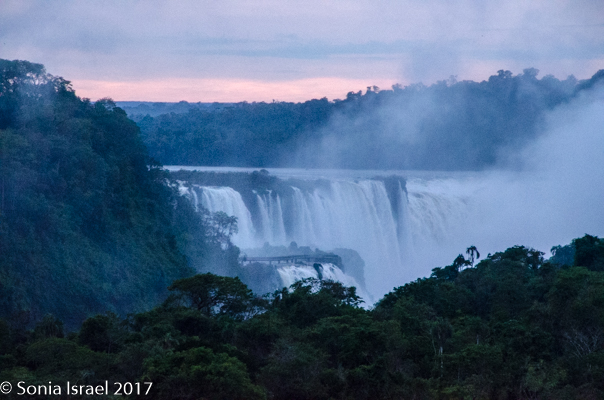
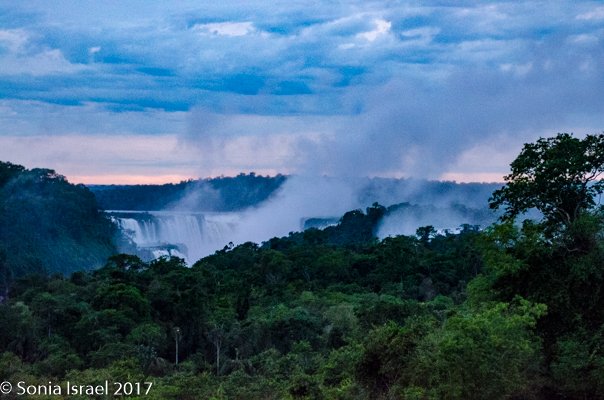
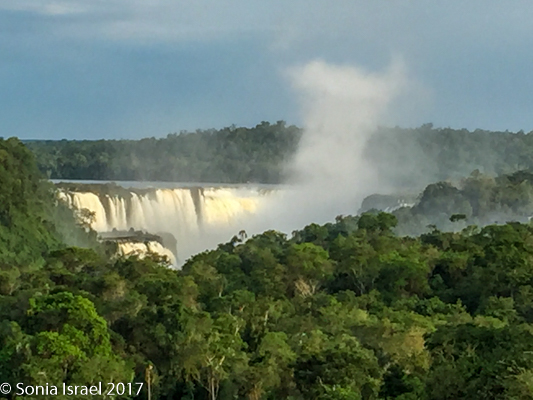
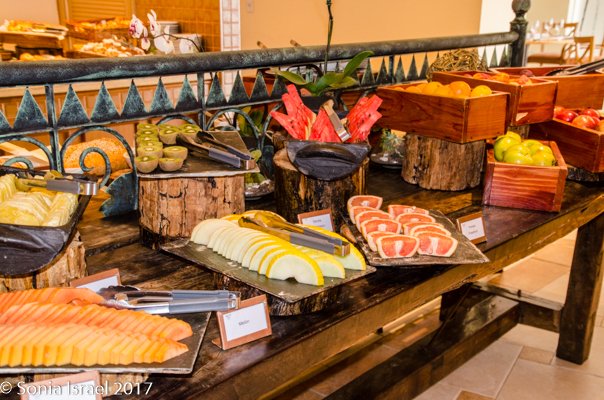
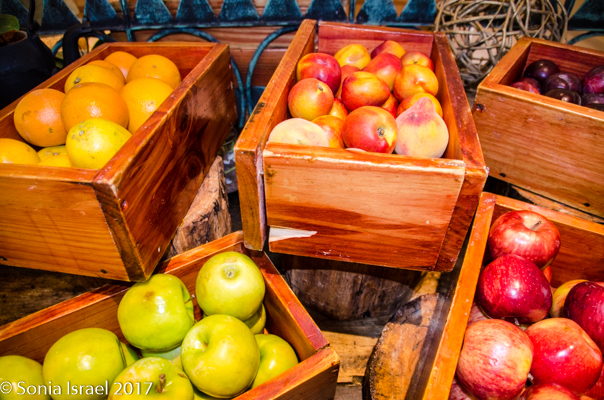
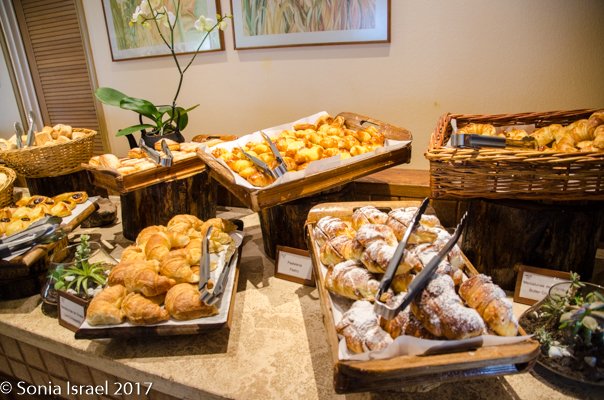



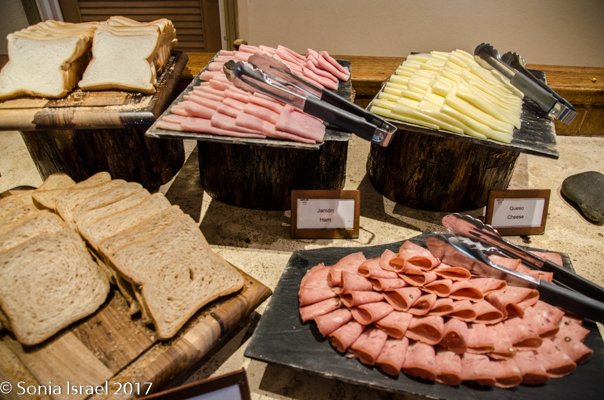
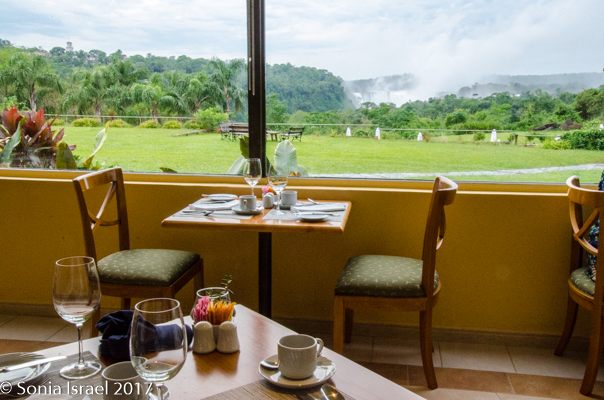
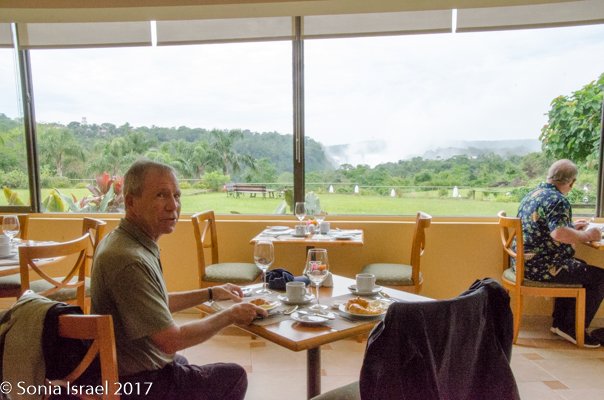
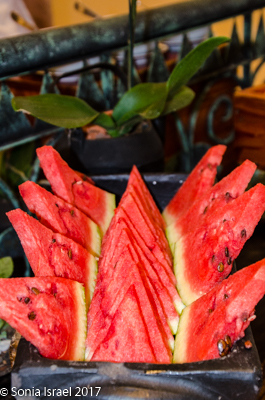

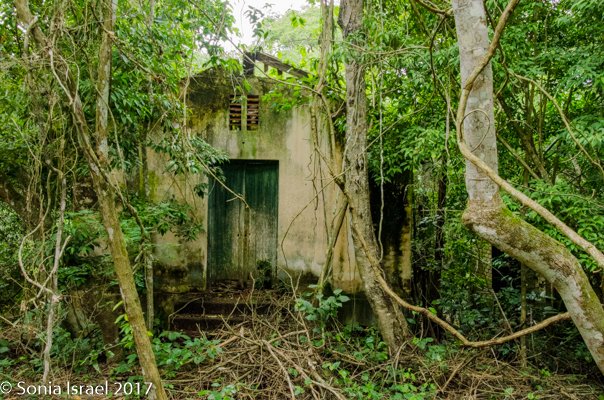
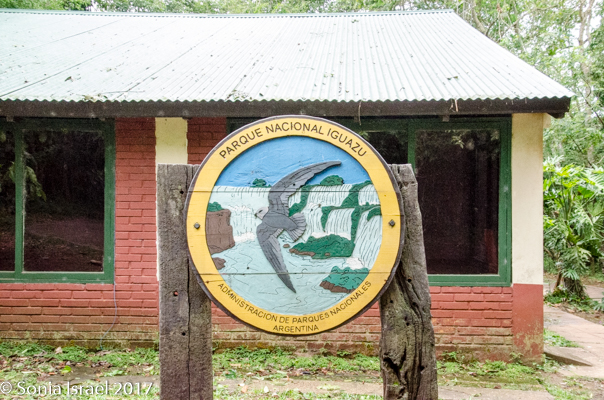
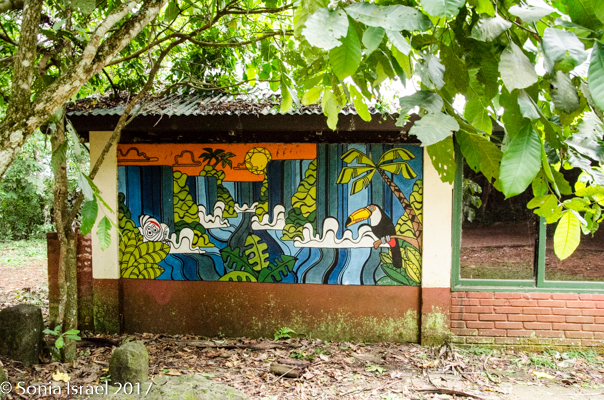

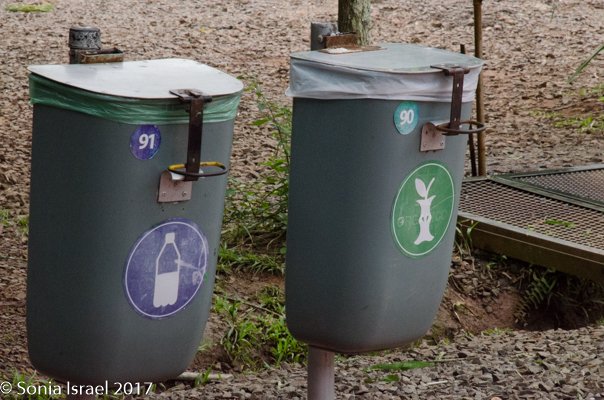

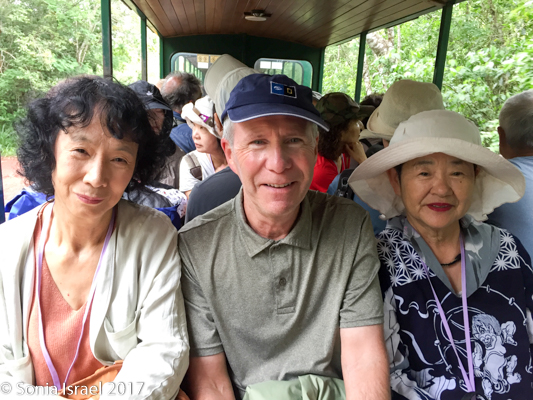
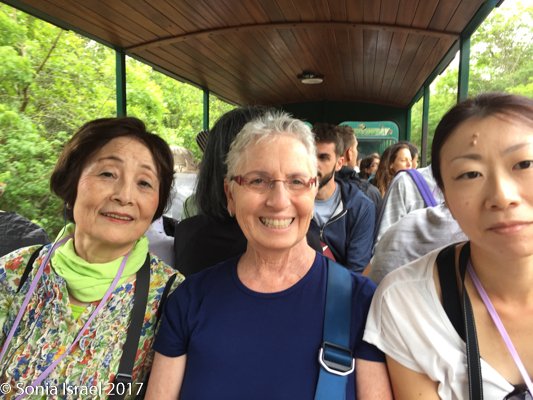
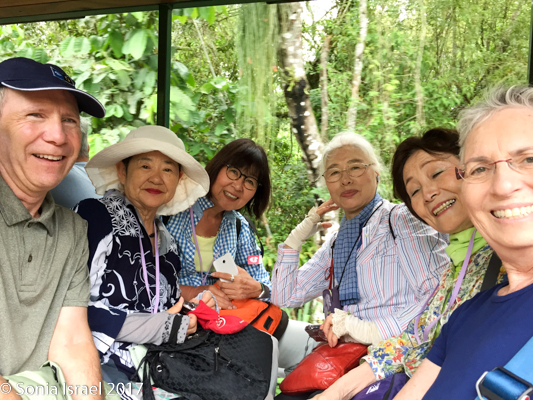

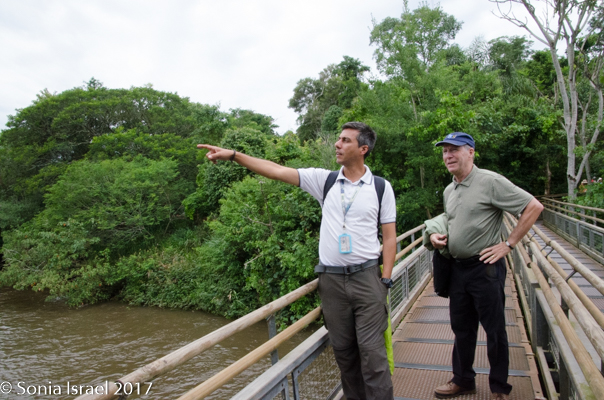
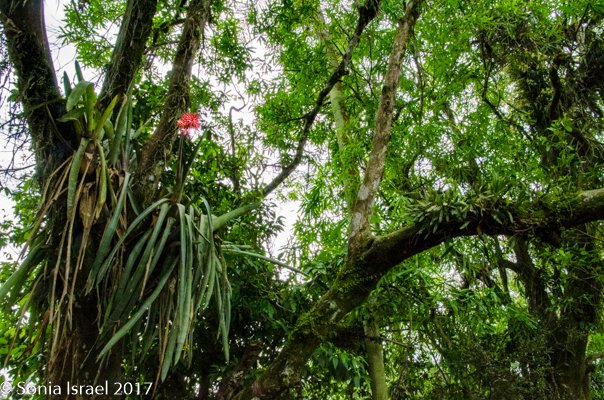

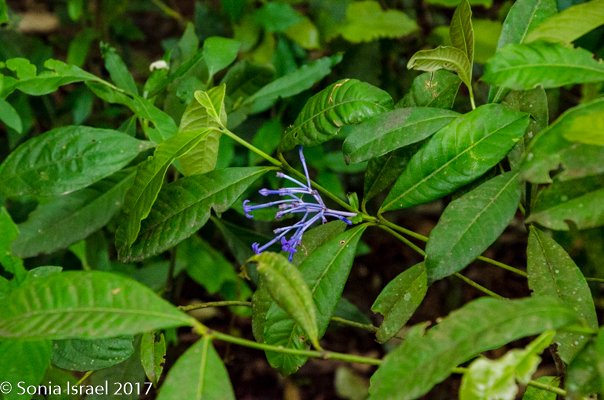

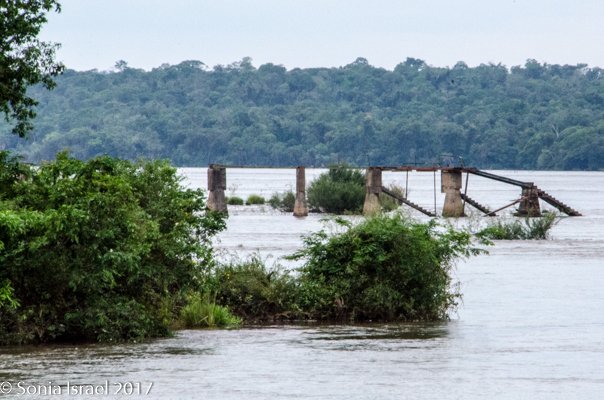
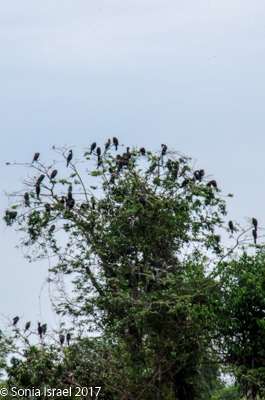

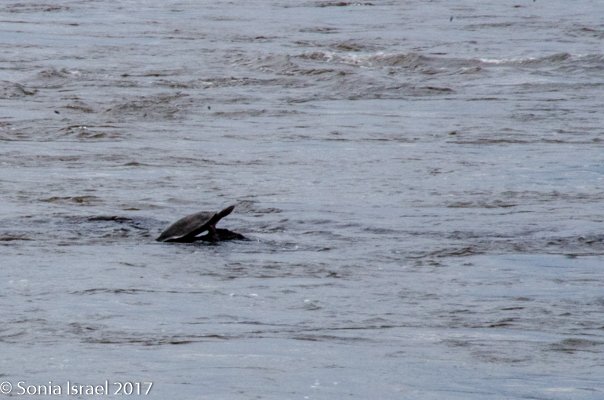

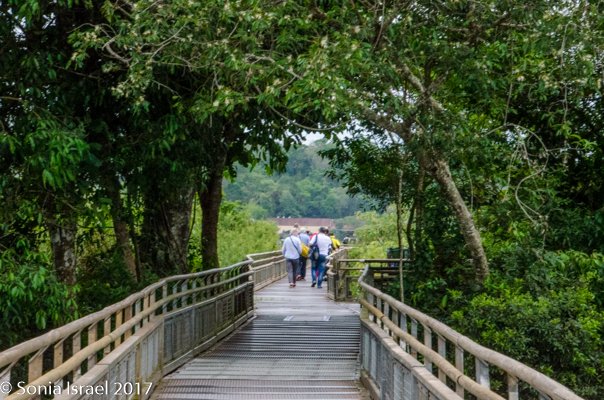
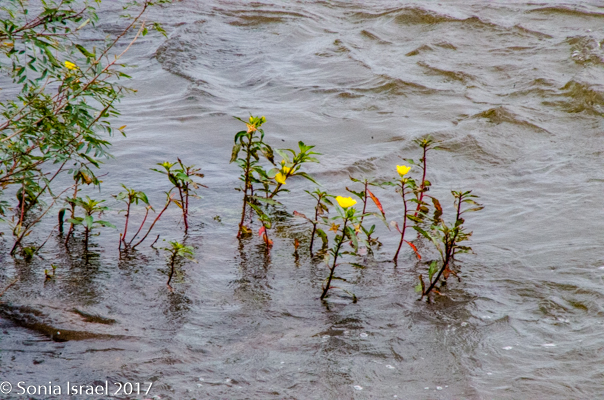
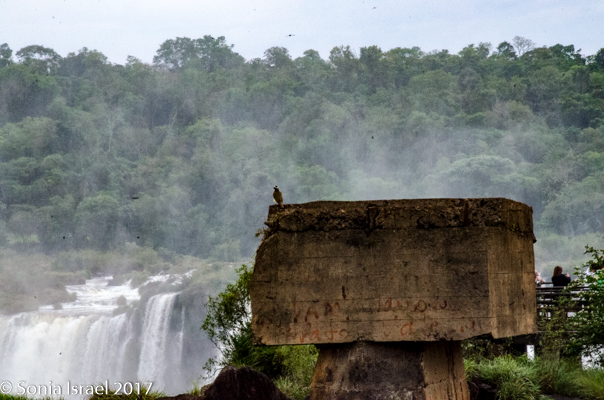
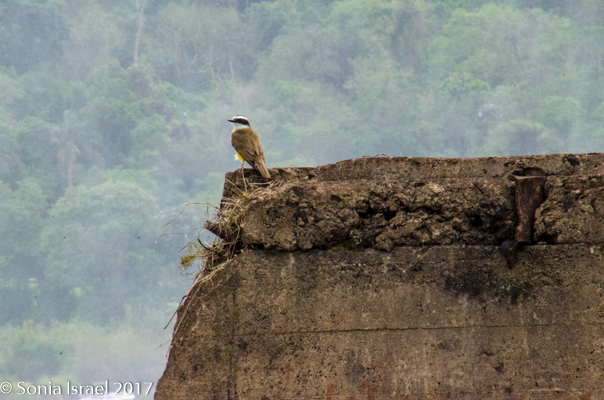


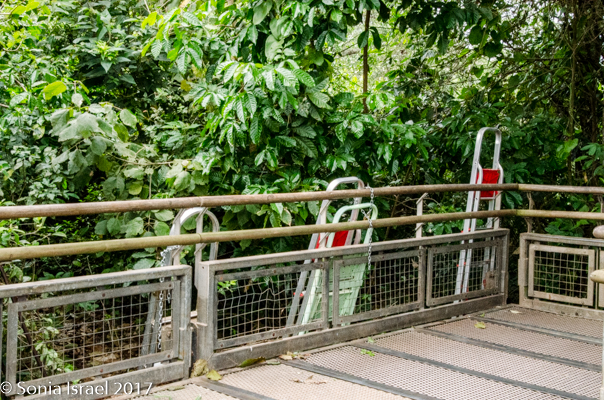
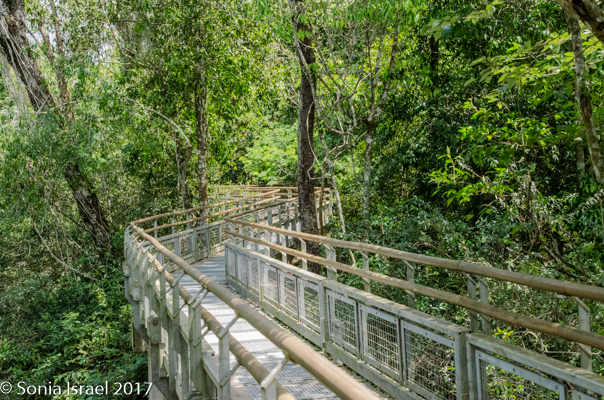
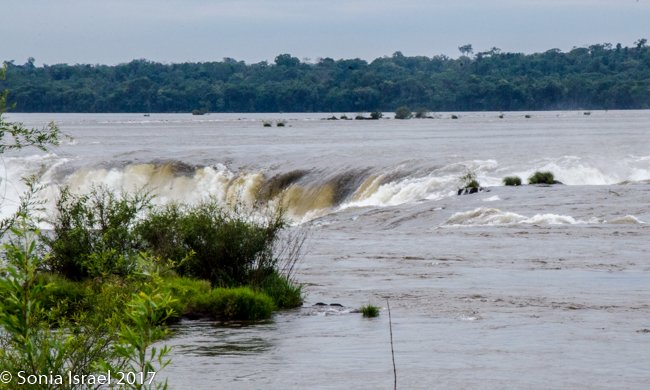
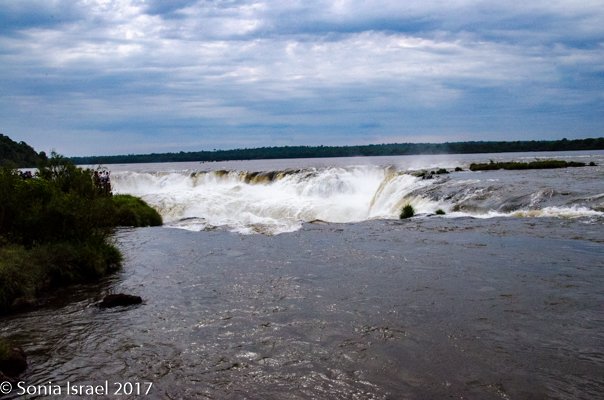
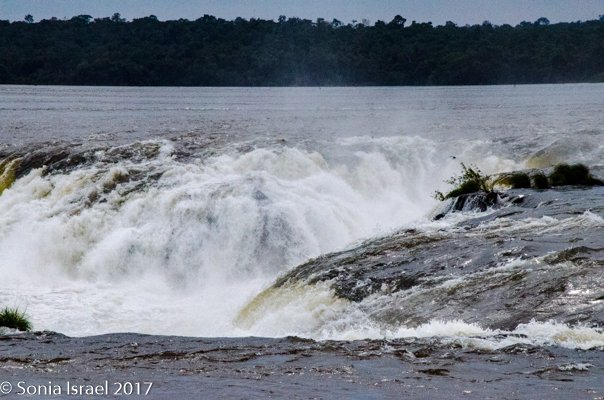
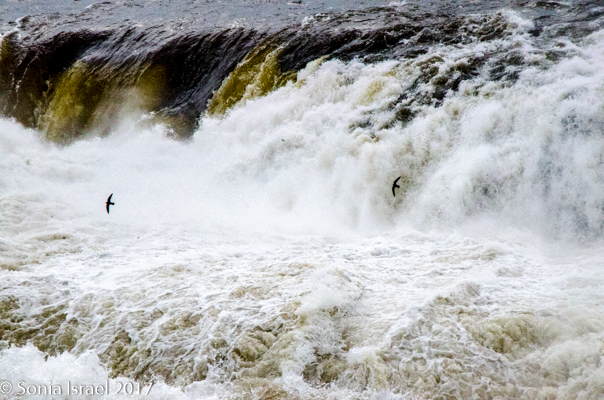
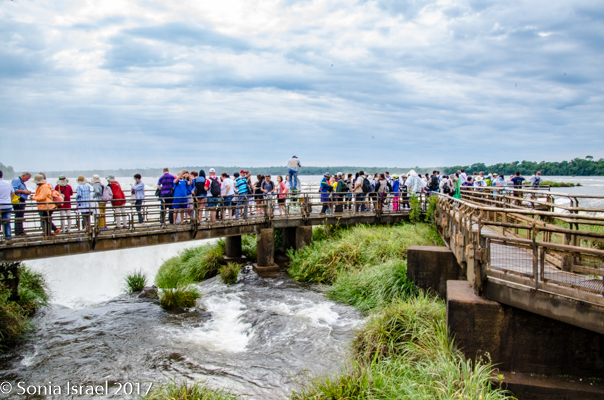
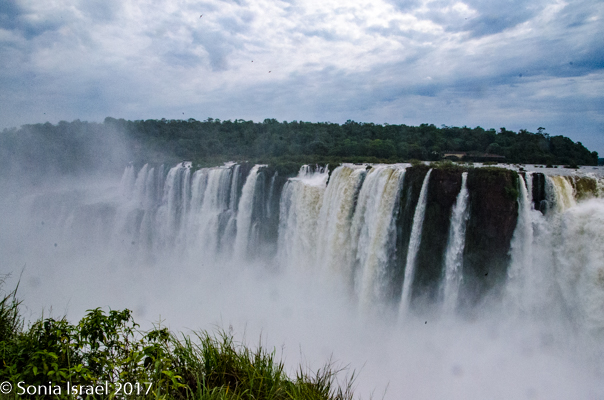
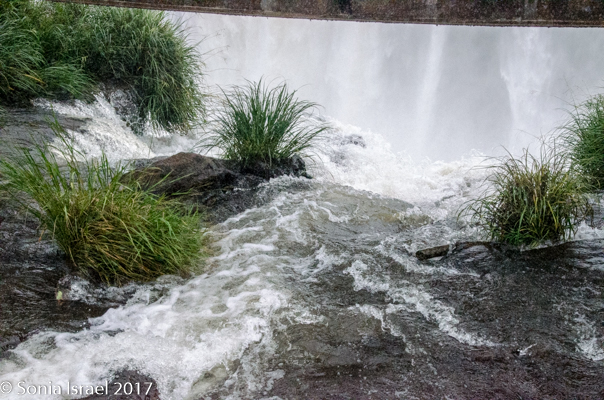



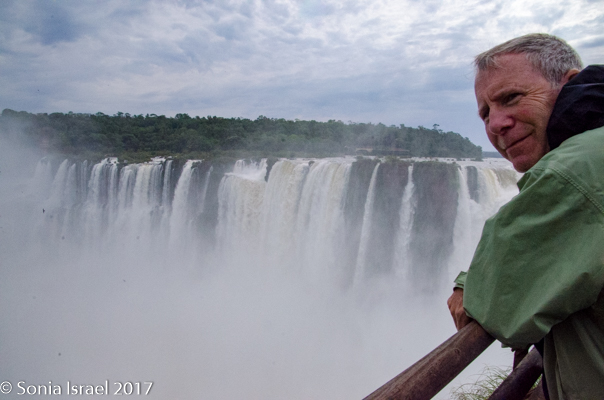
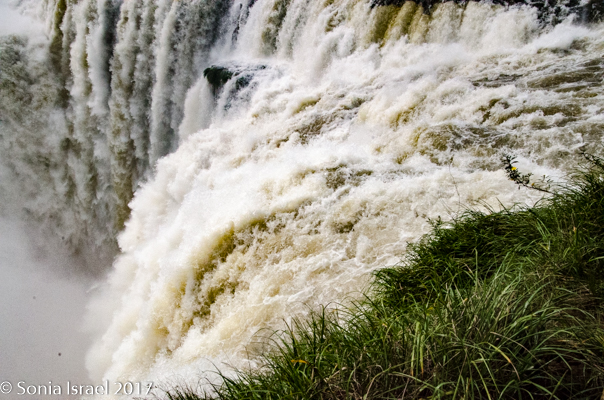
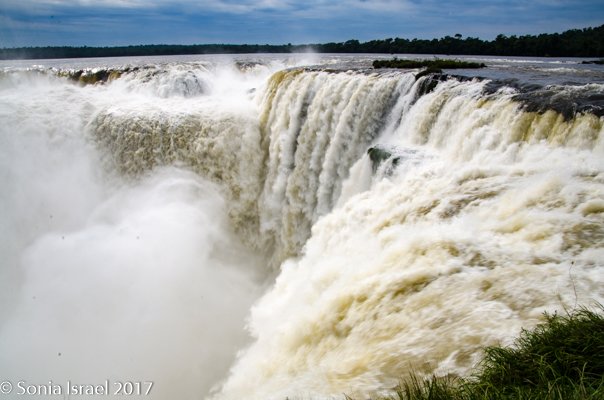
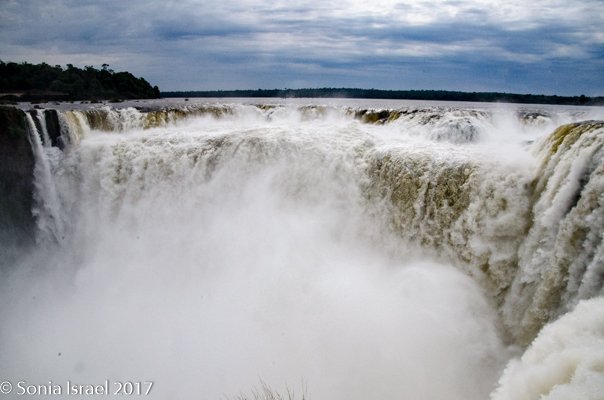

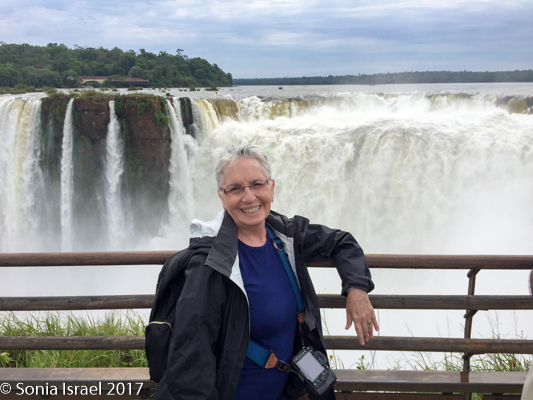
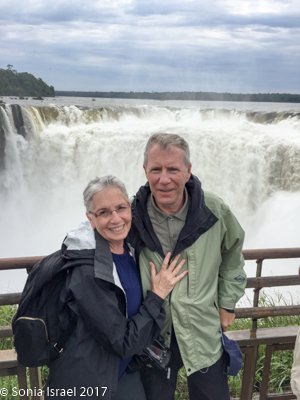
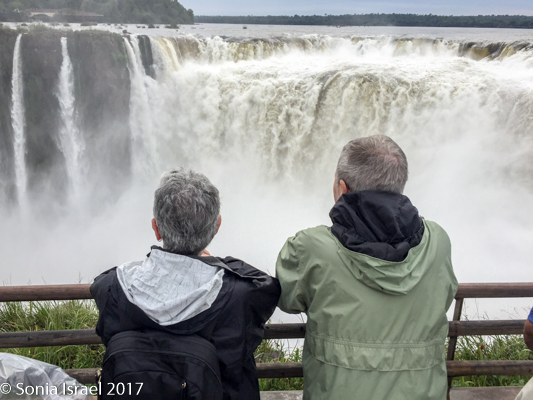
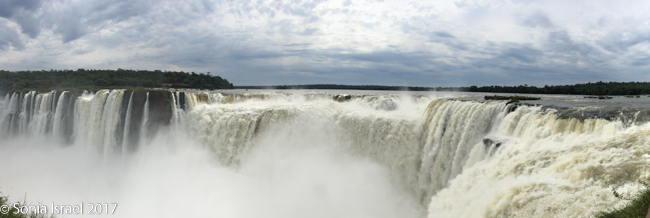
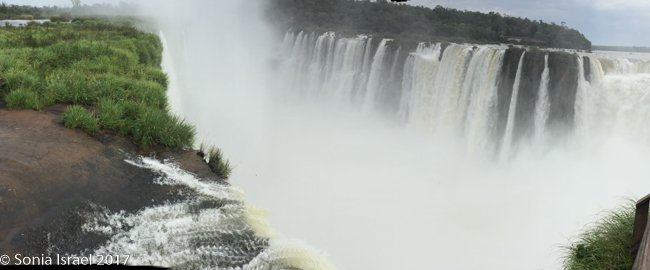

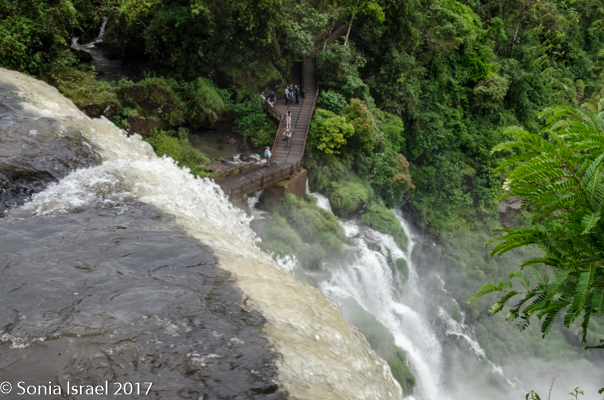
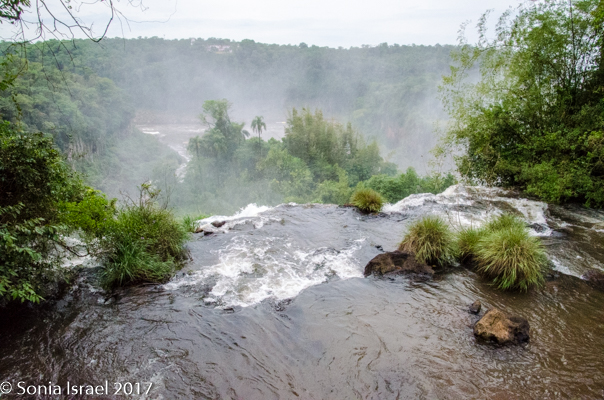
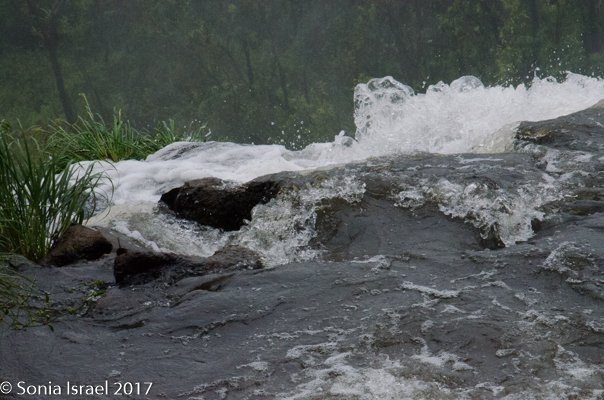
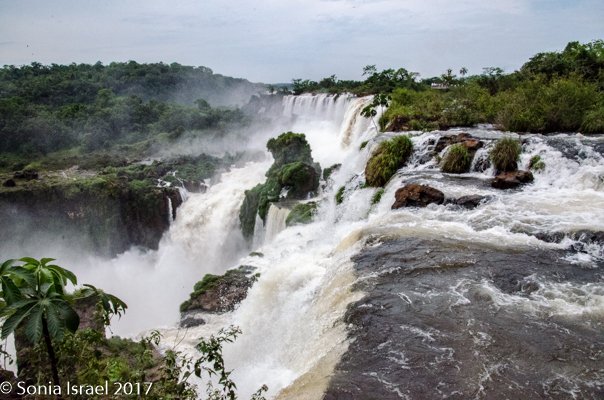
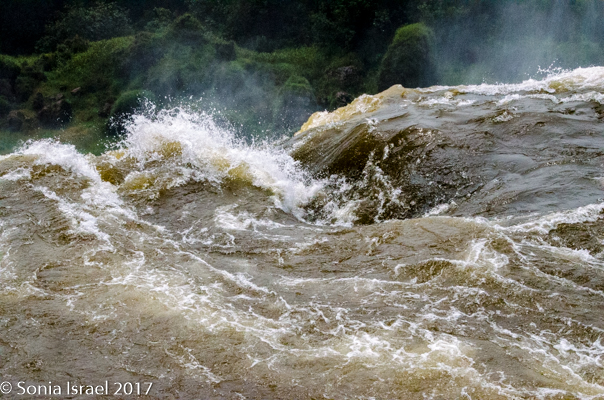
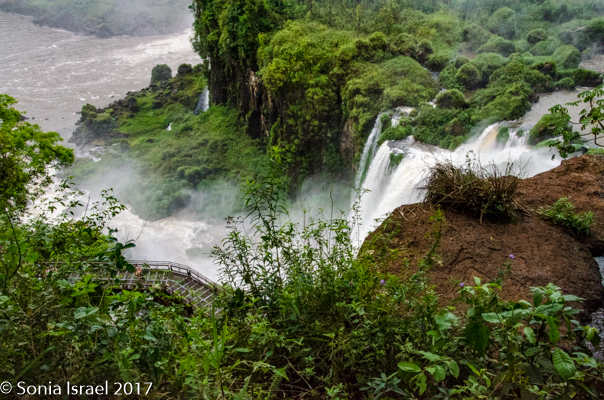
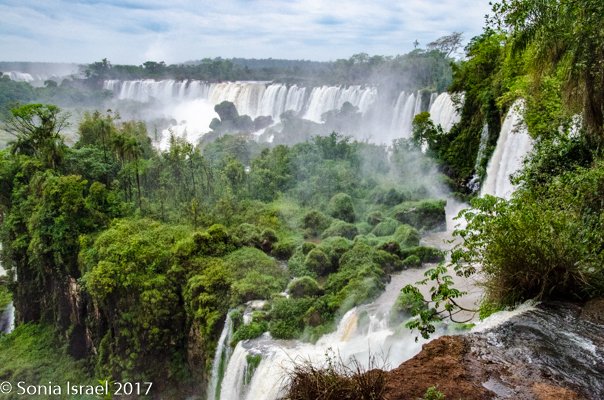
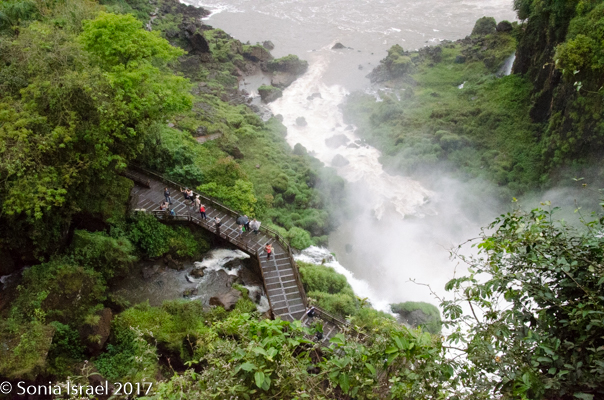

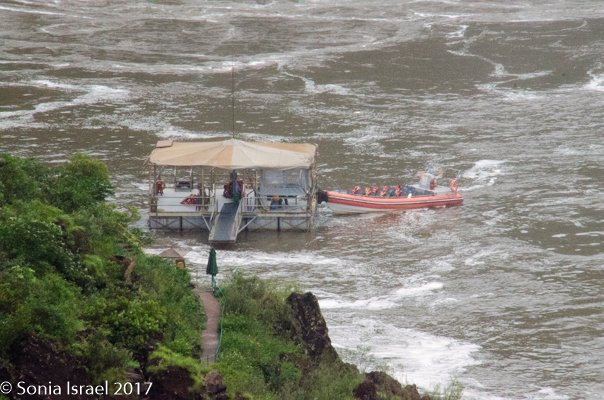
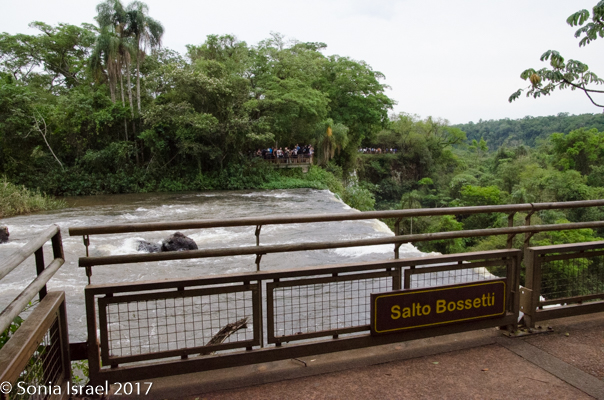
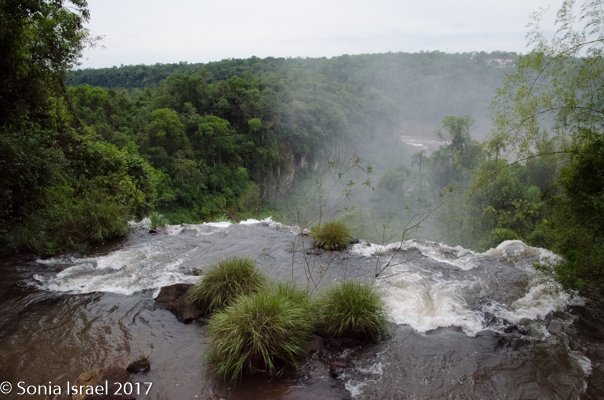
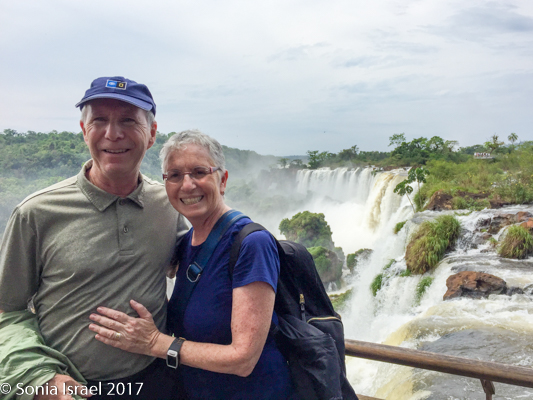
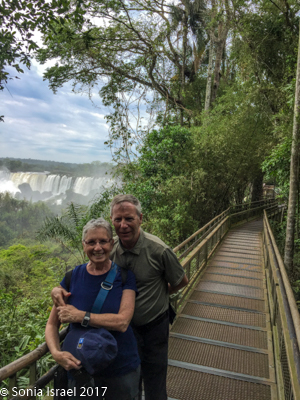
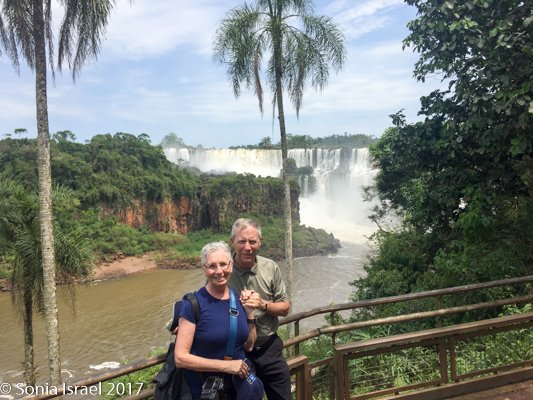
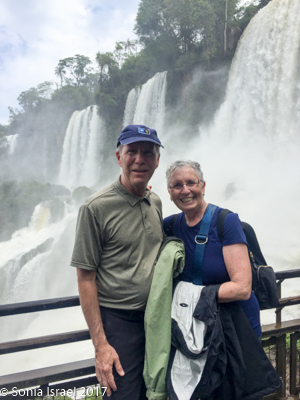
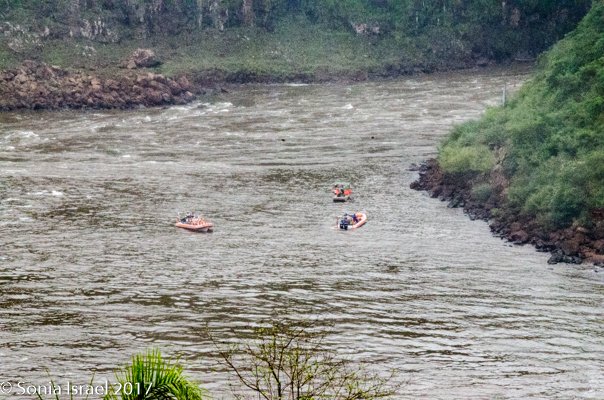
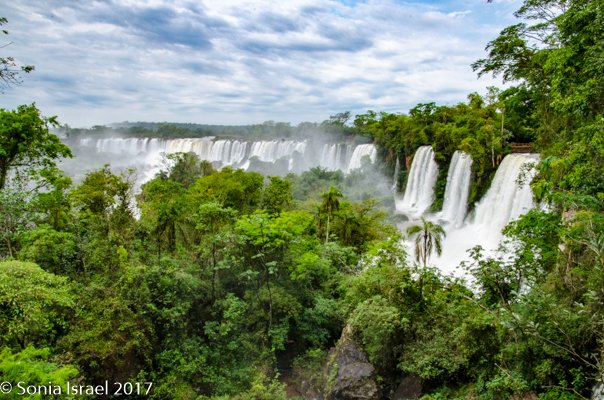
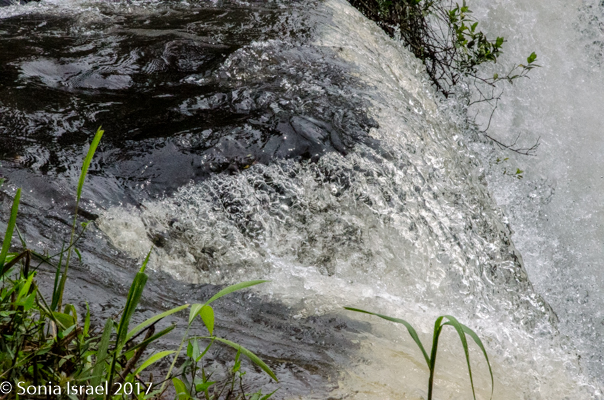
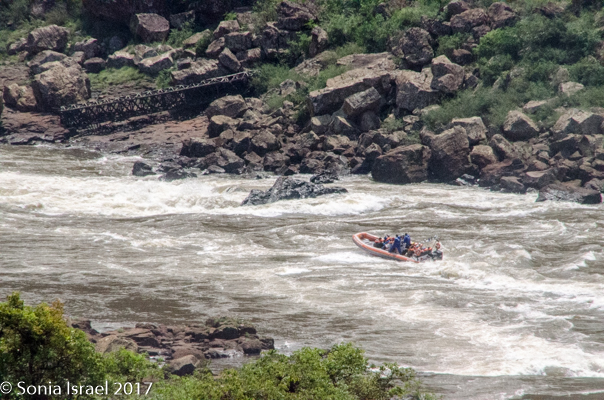
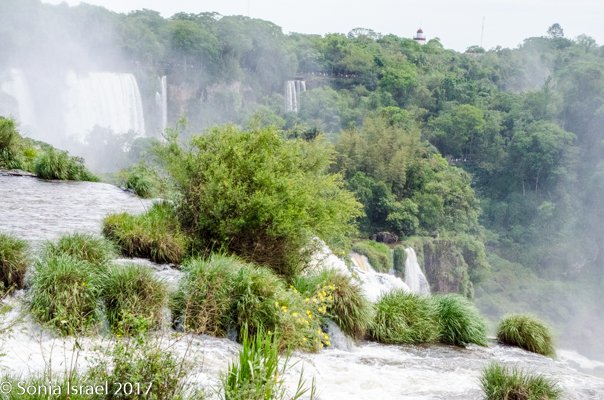
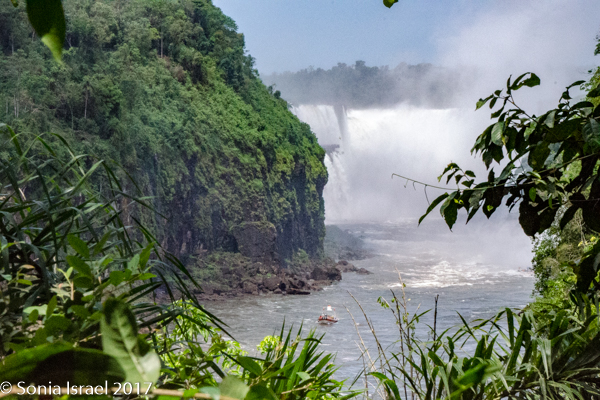
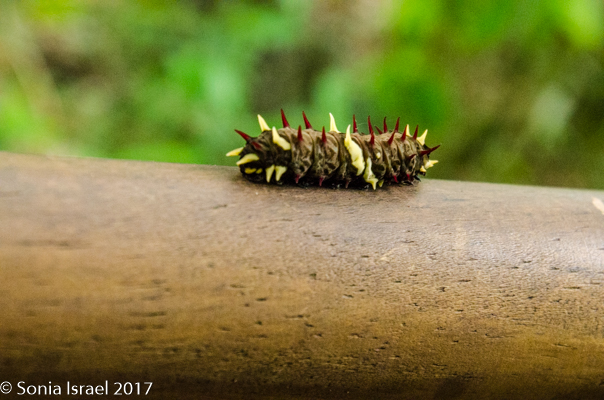
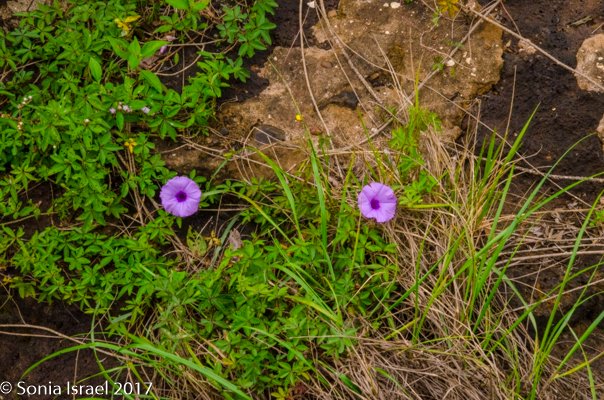
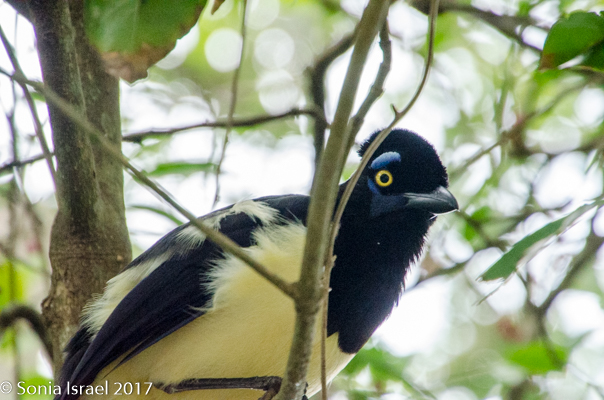
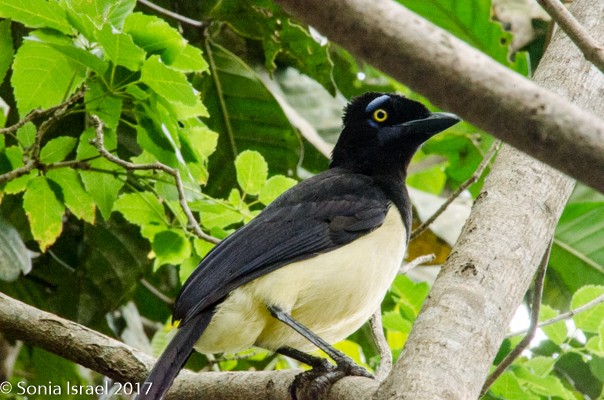
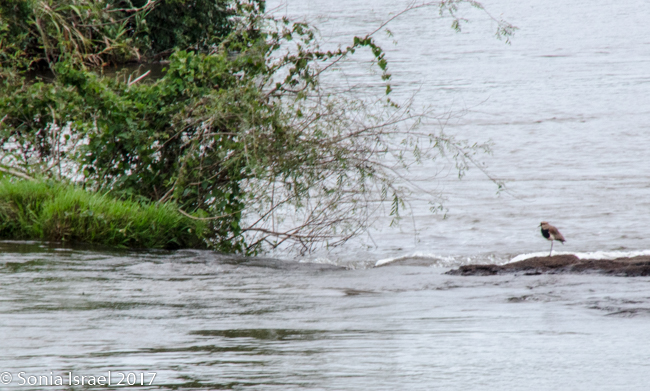
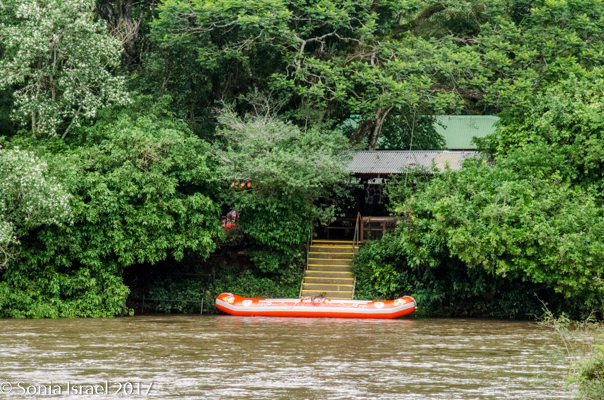
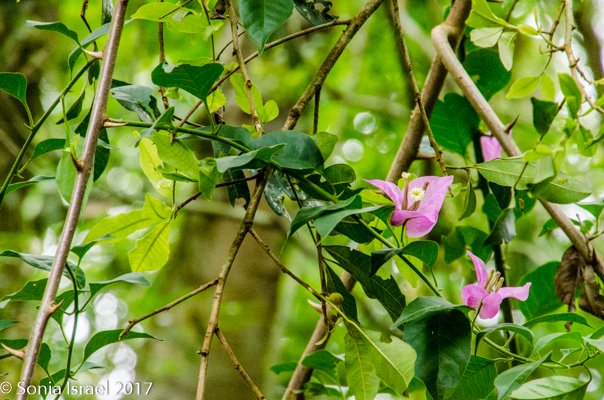
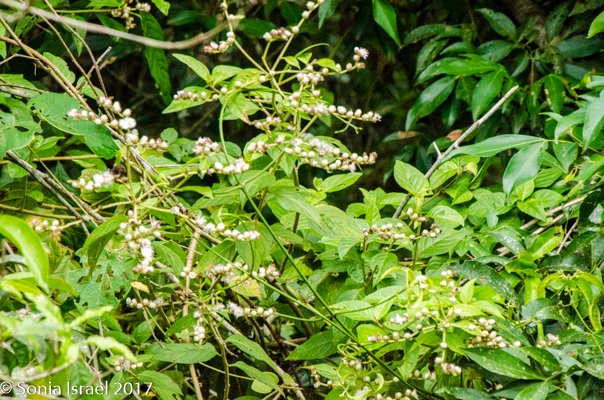
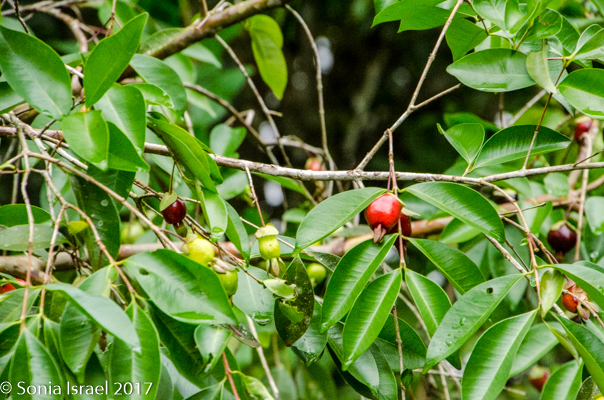
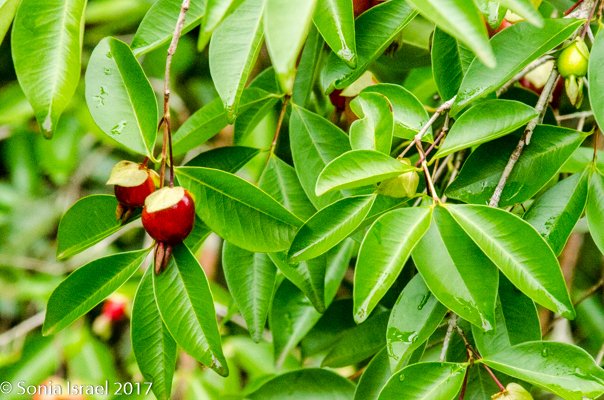
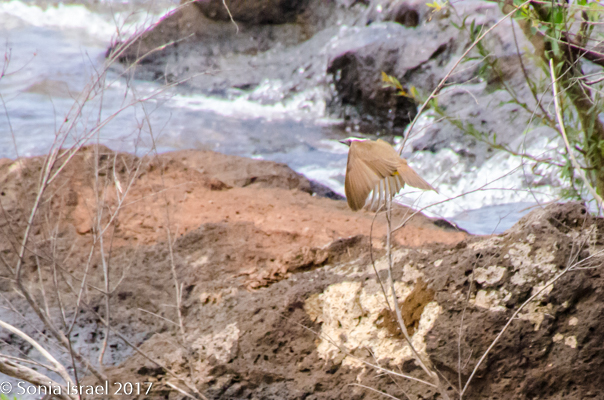
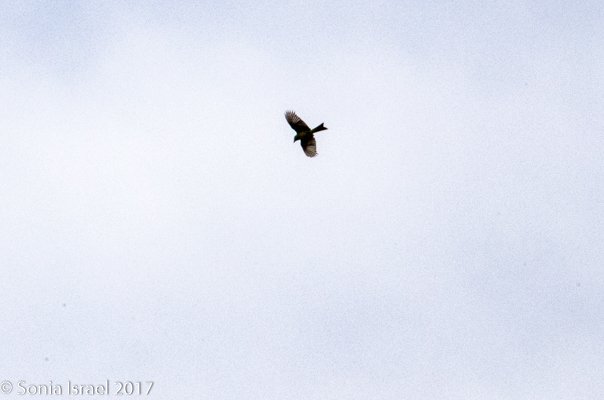
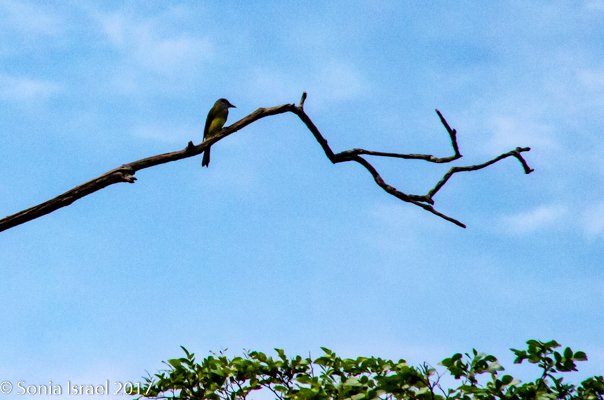
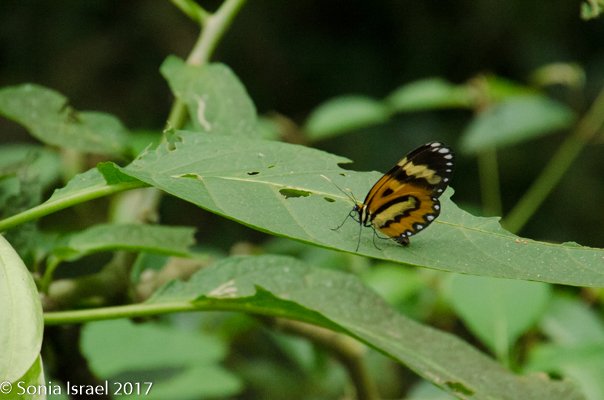
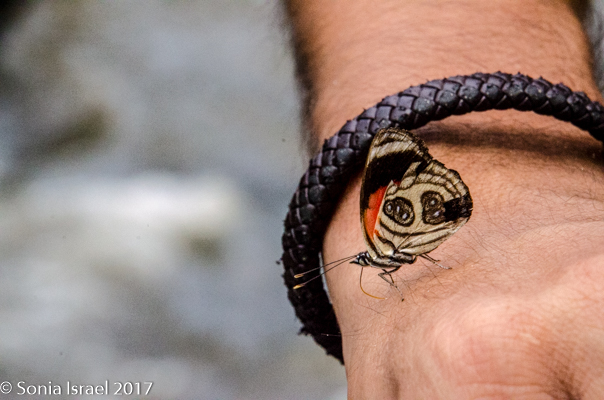
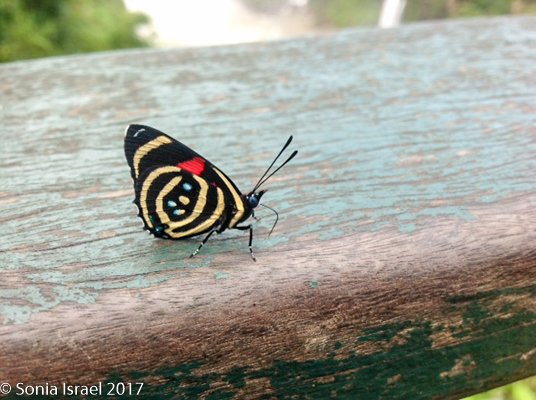
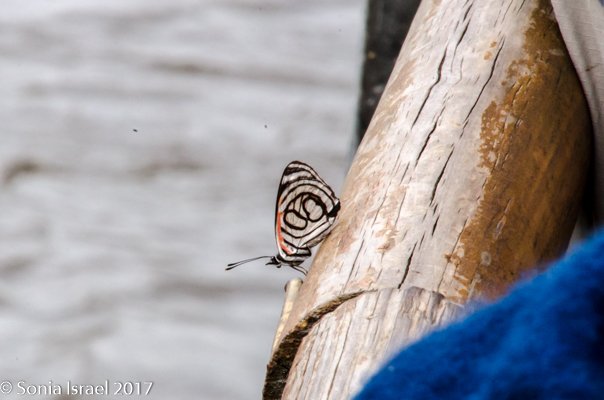
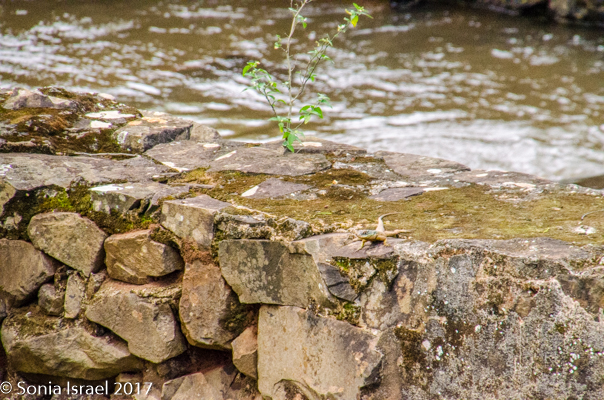
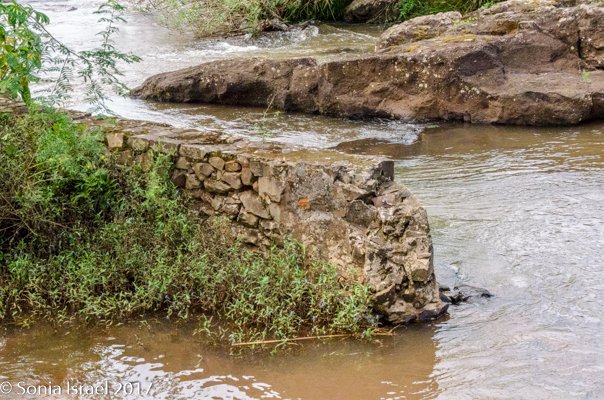
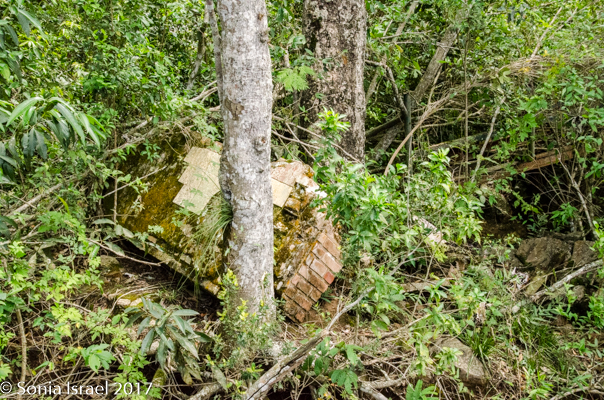
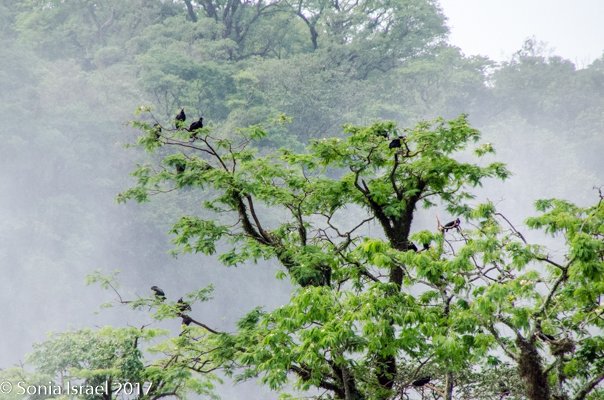
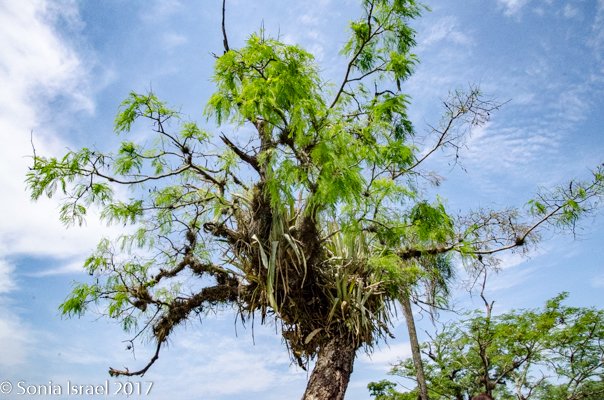
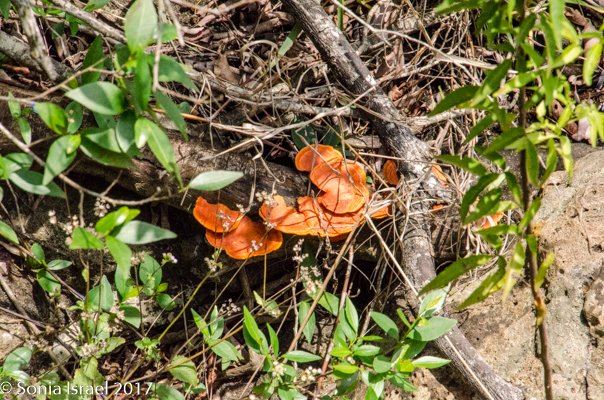
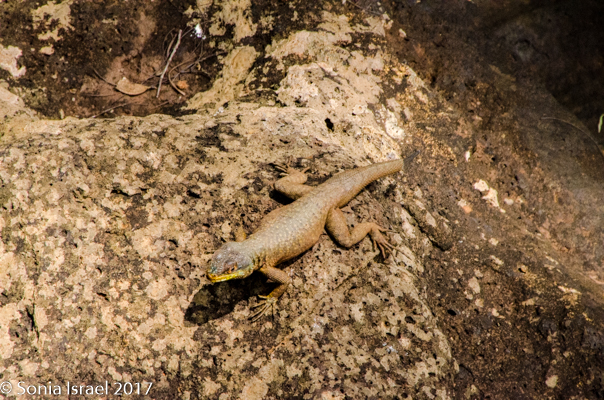
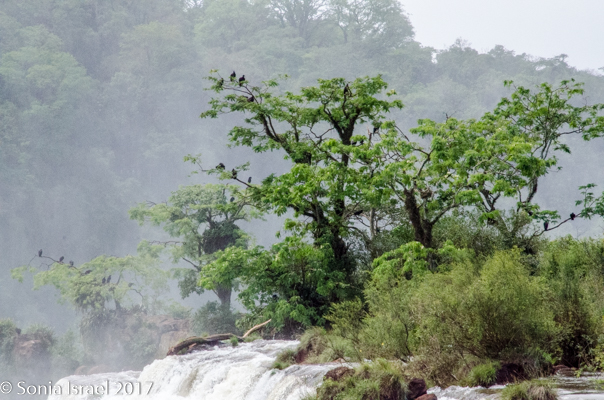
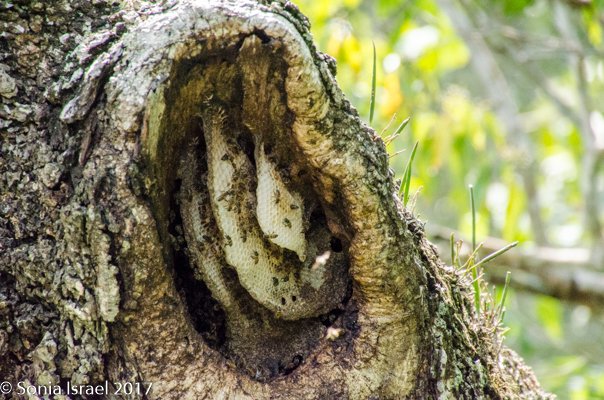
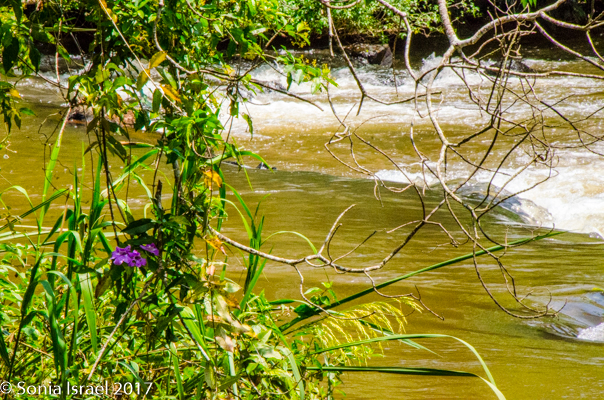
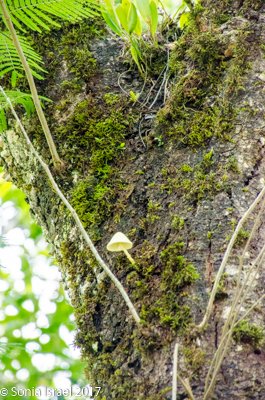
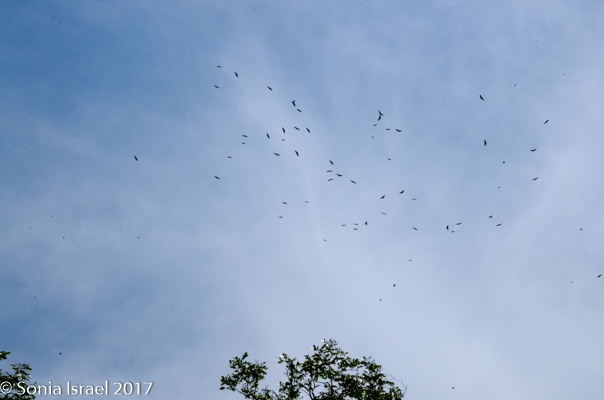
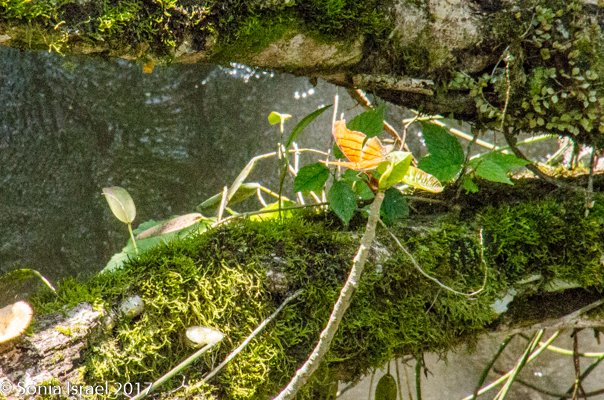

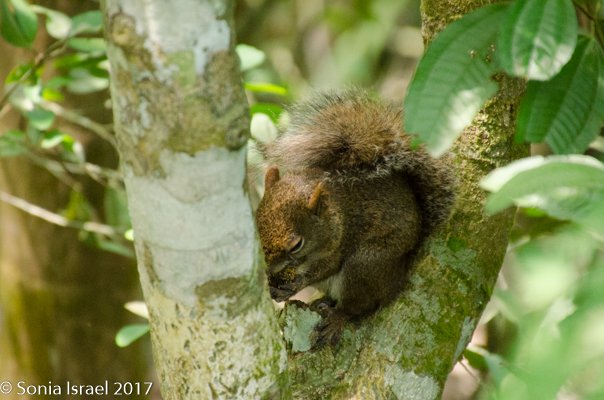
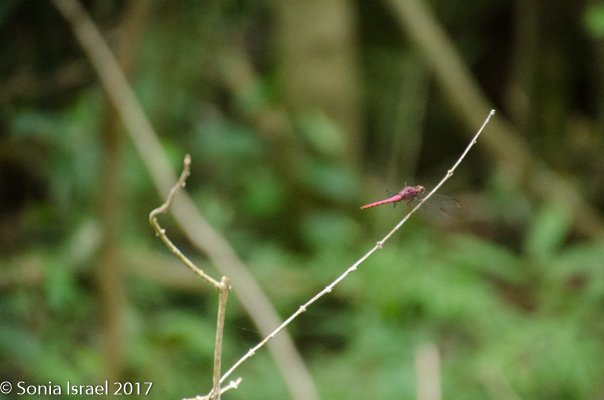
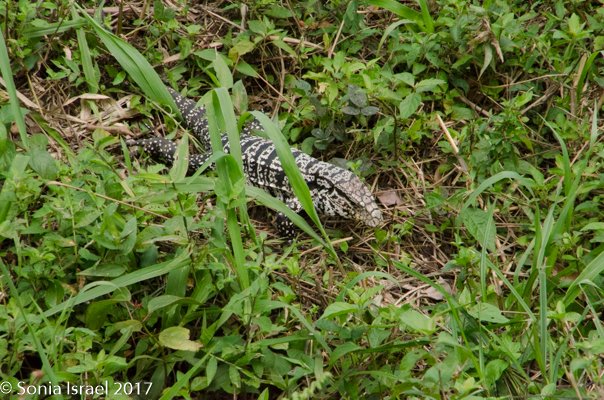
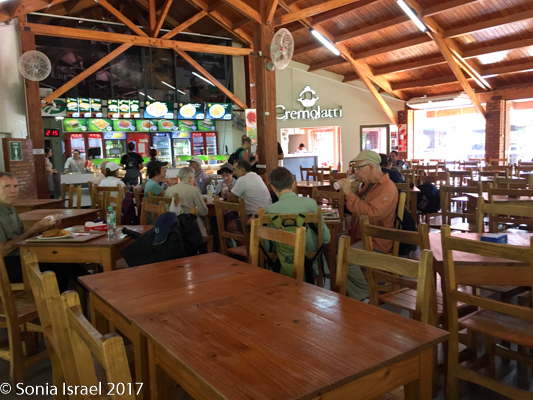

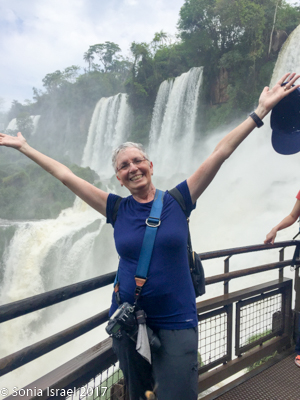
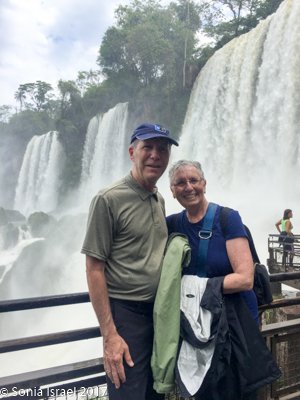
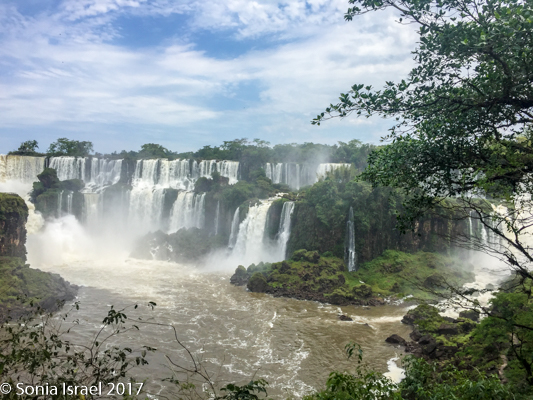


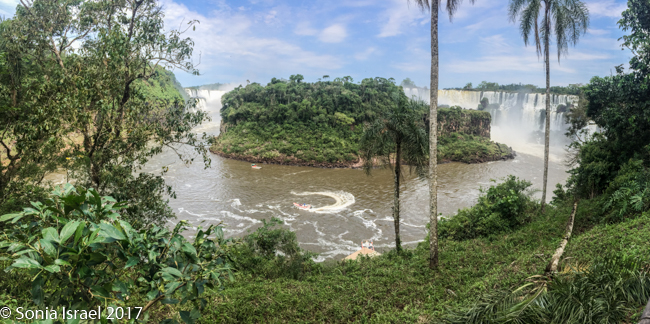
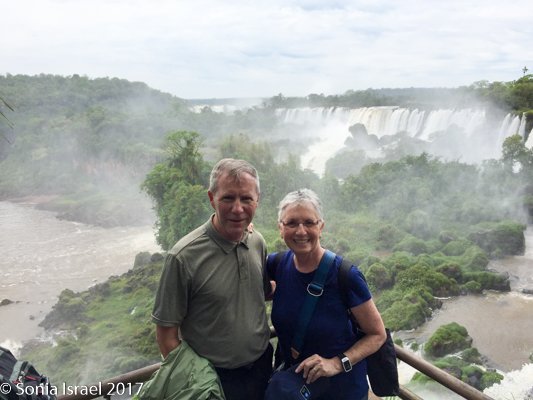
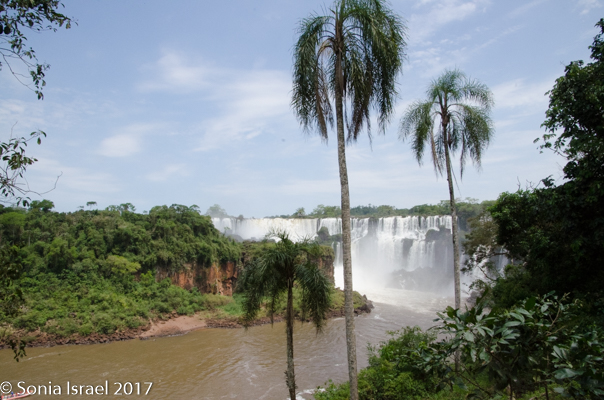
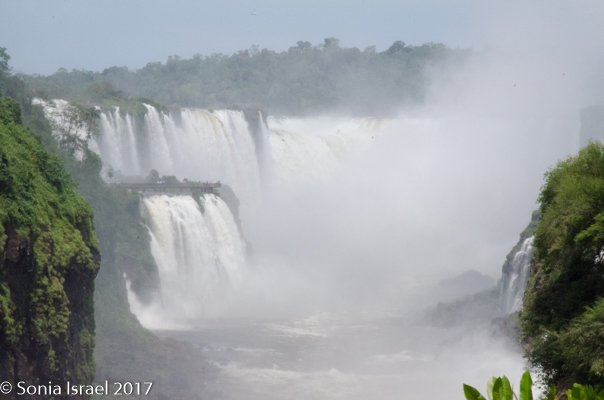
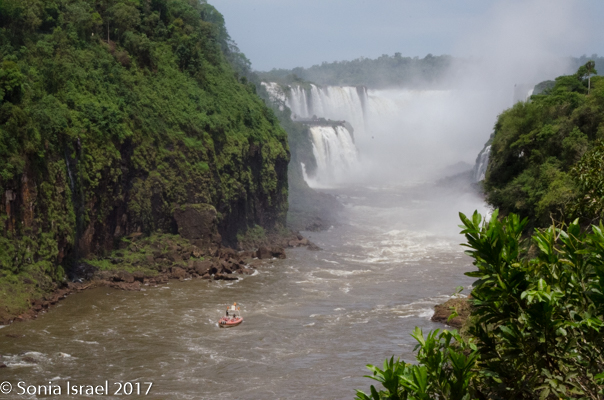
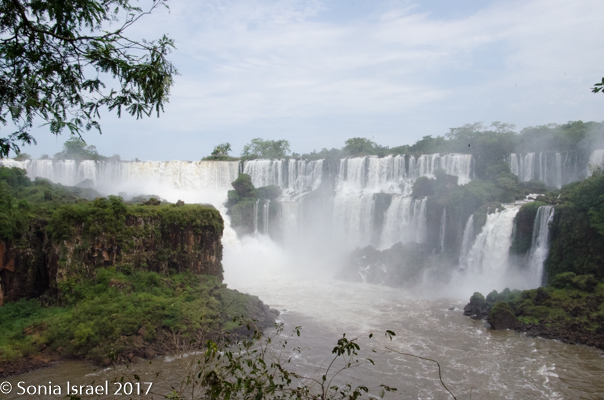
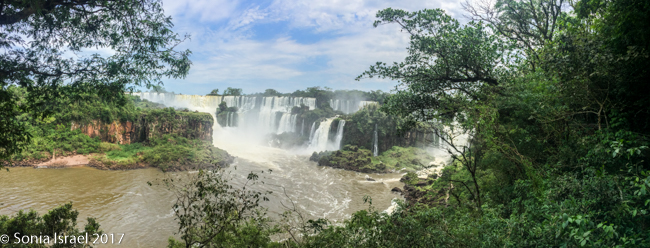
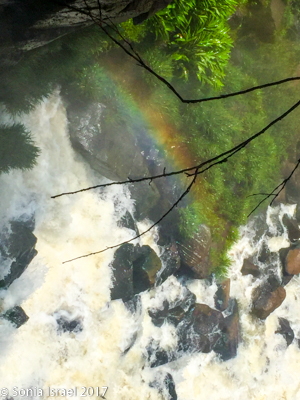
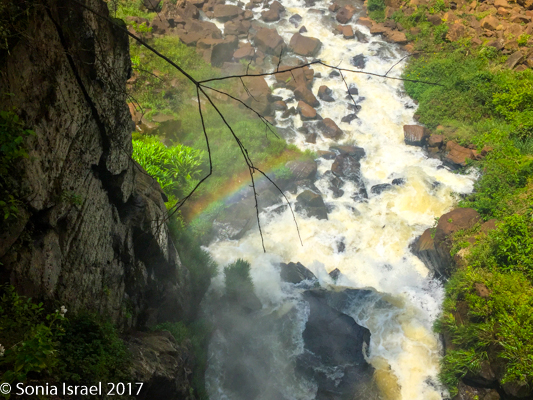
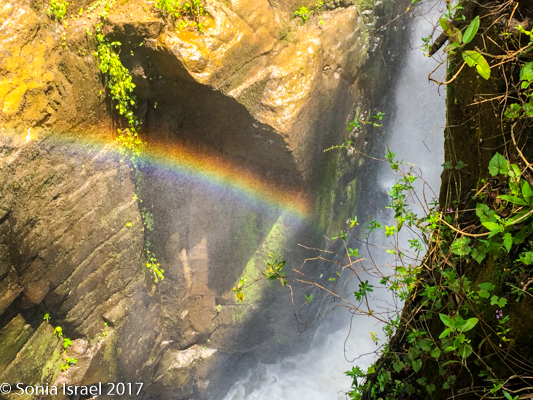
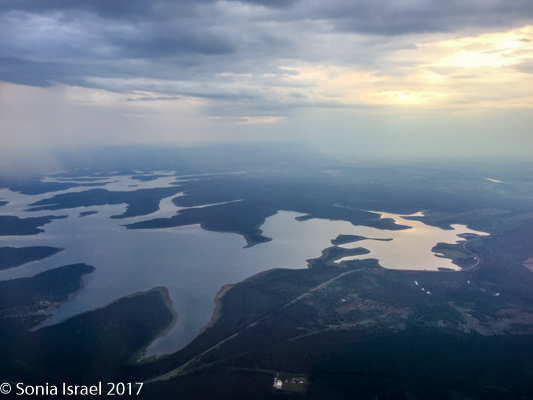

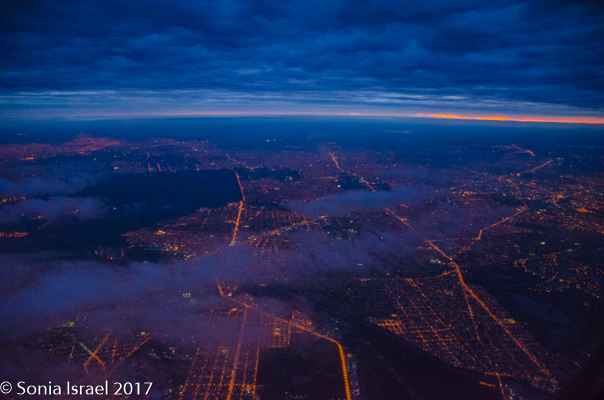
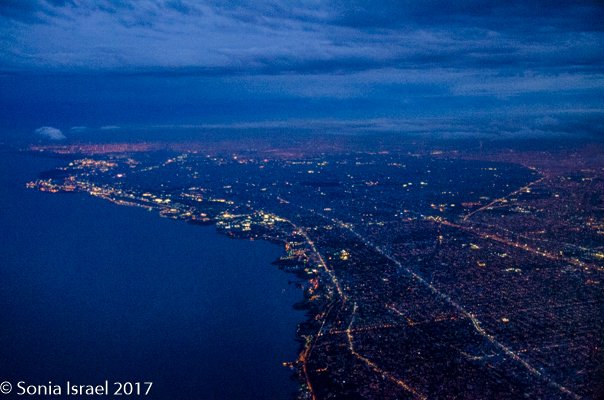

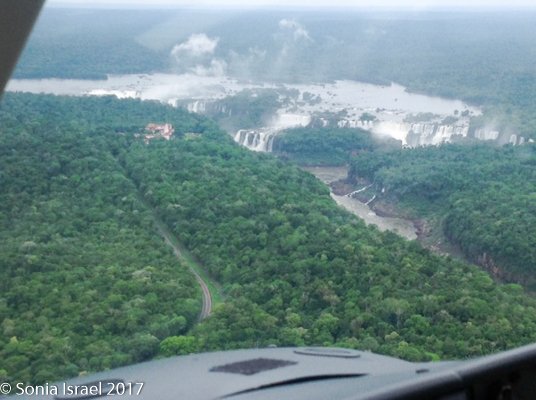
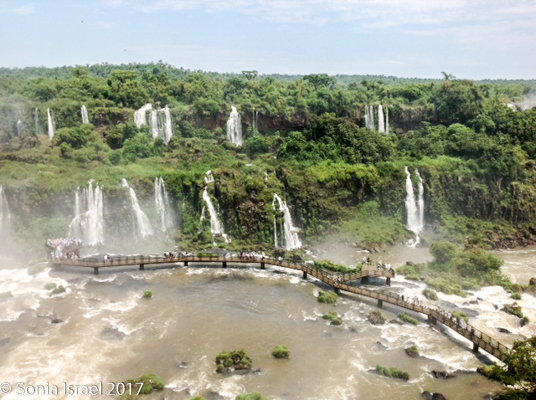
Jennifer Hinkle
This is really spectacular! Excellent pictures, and I love your writing style.